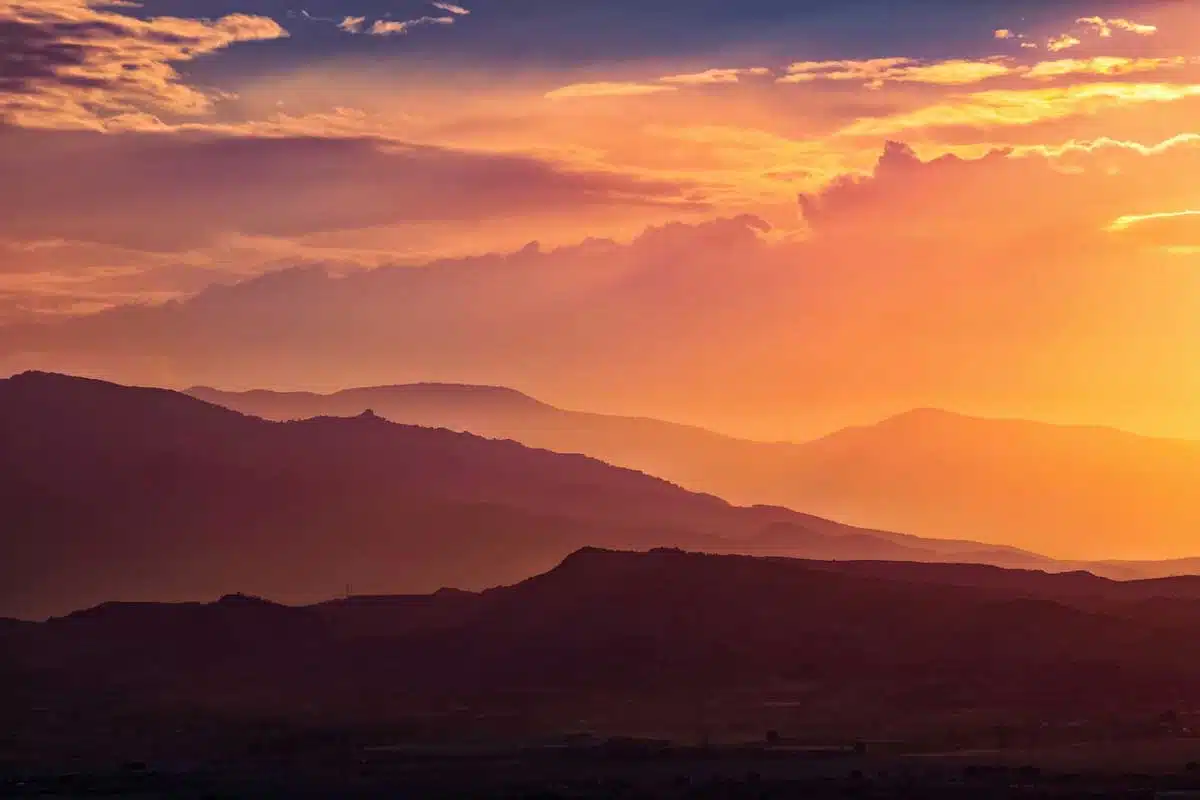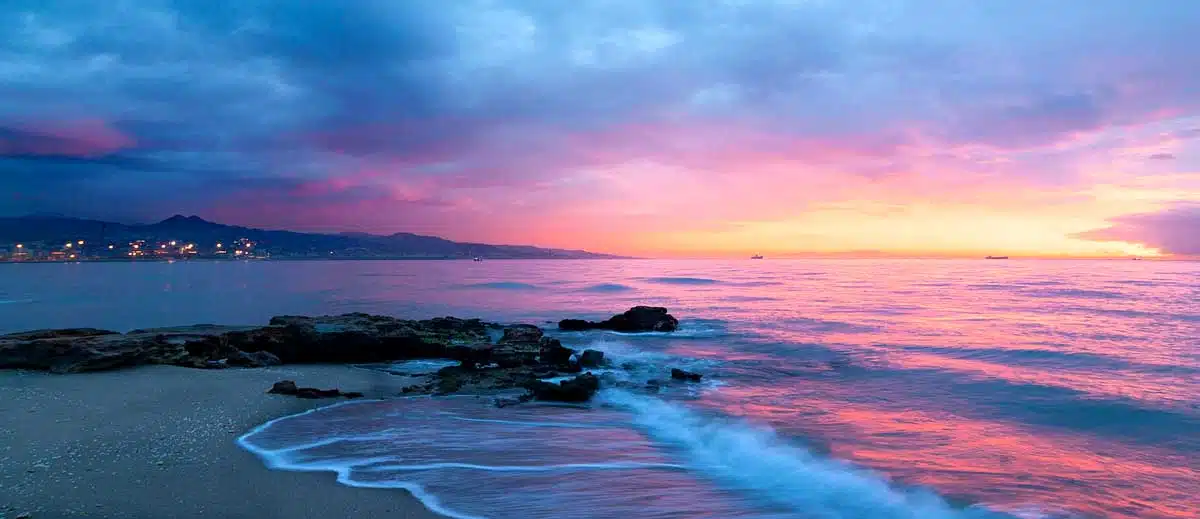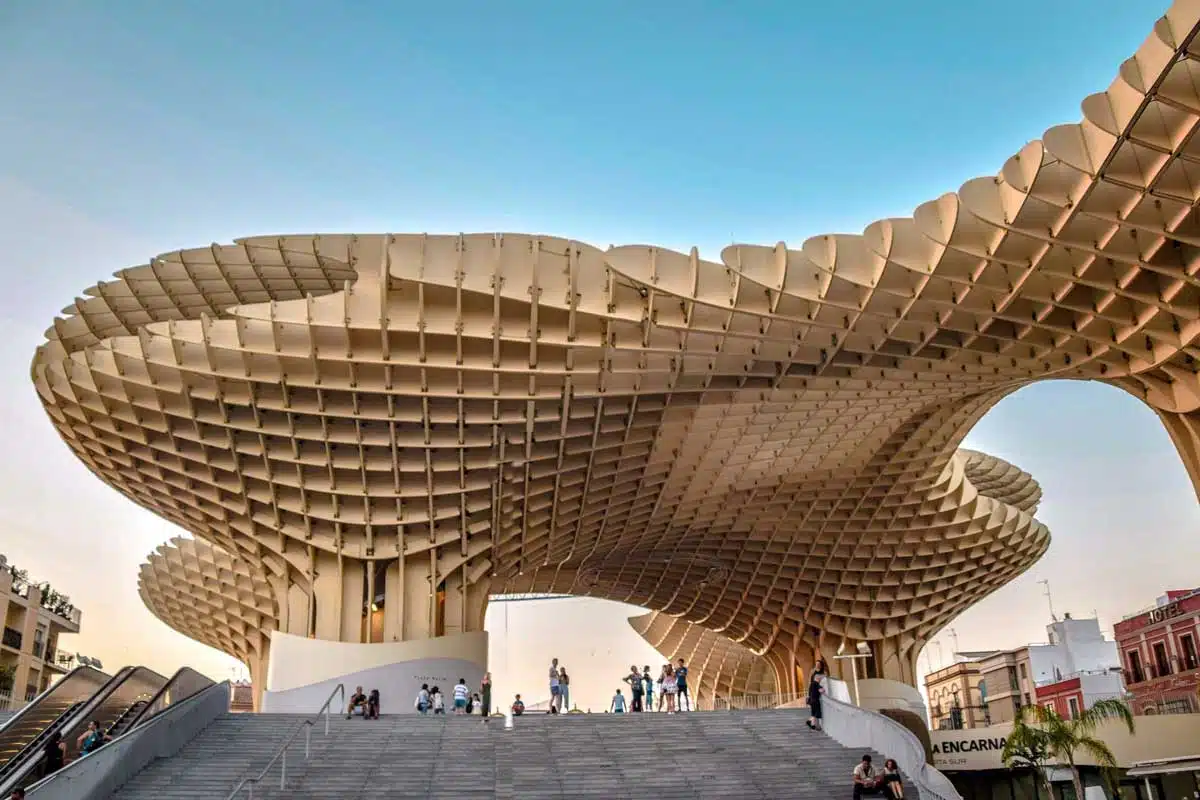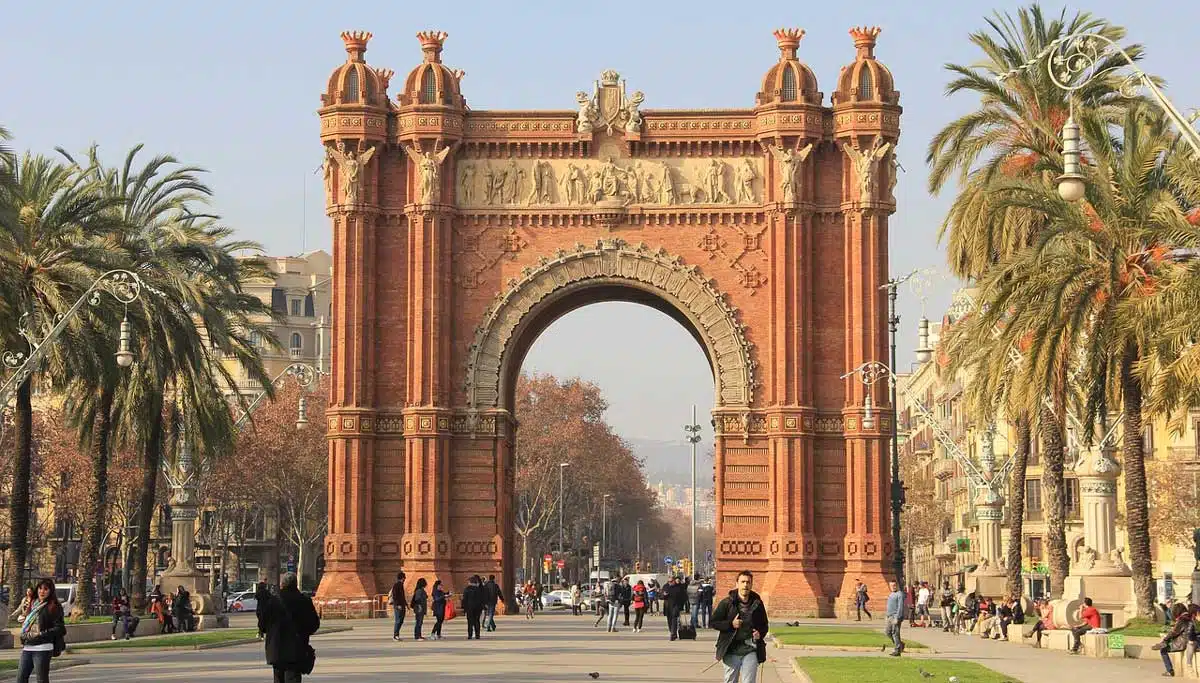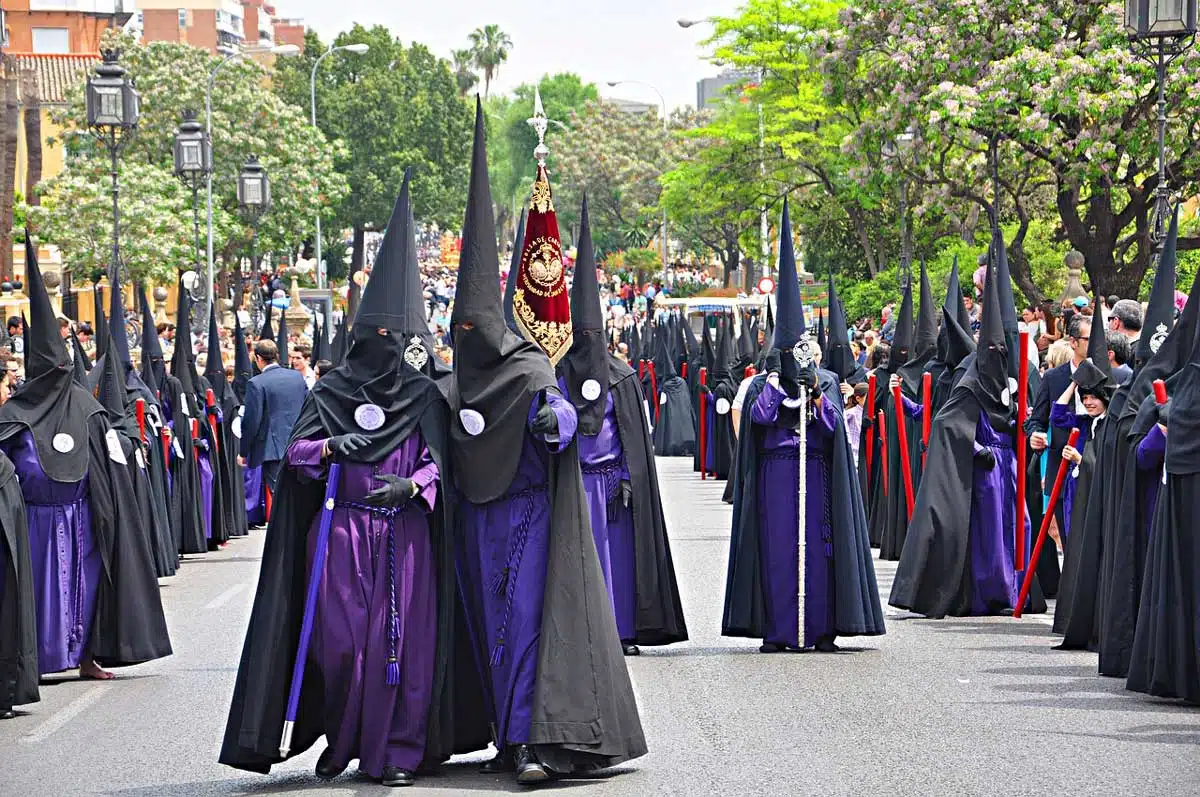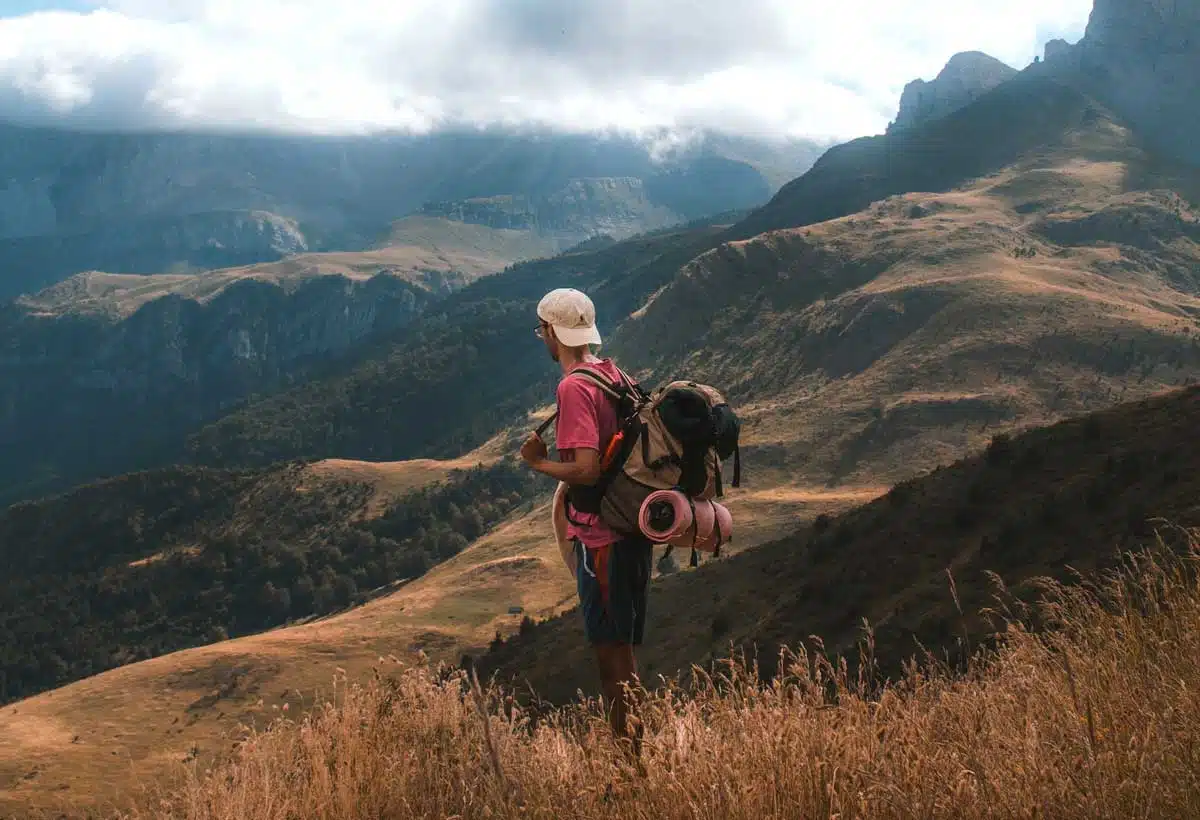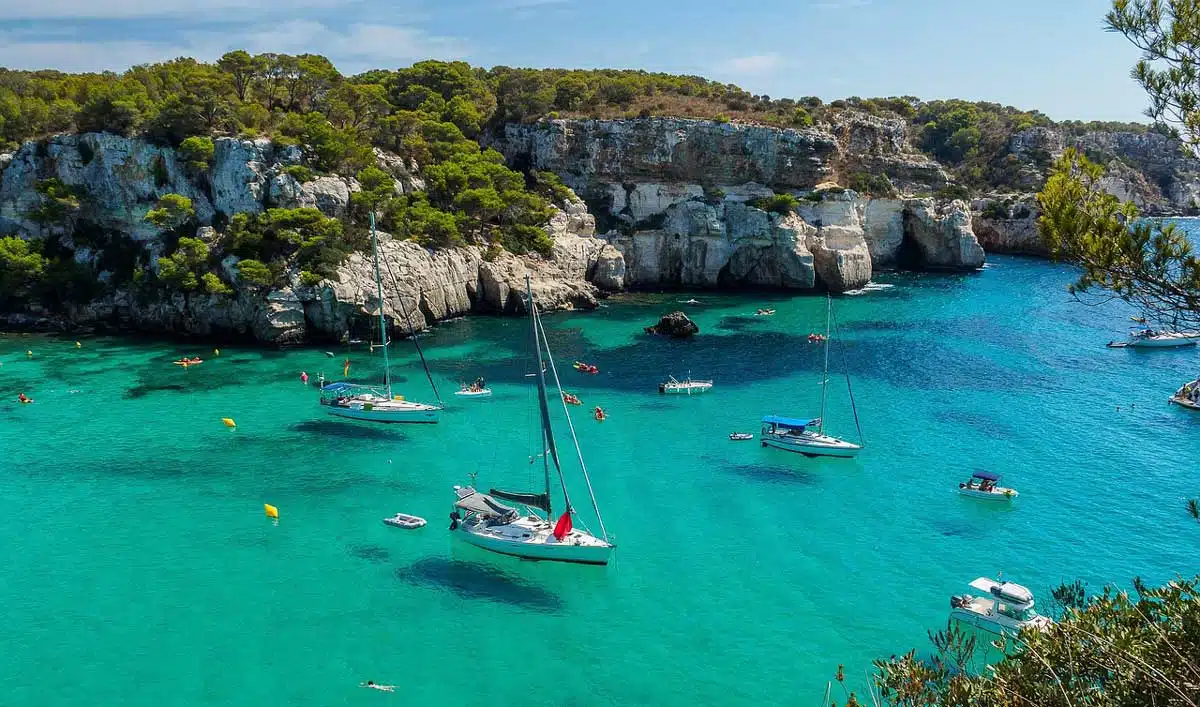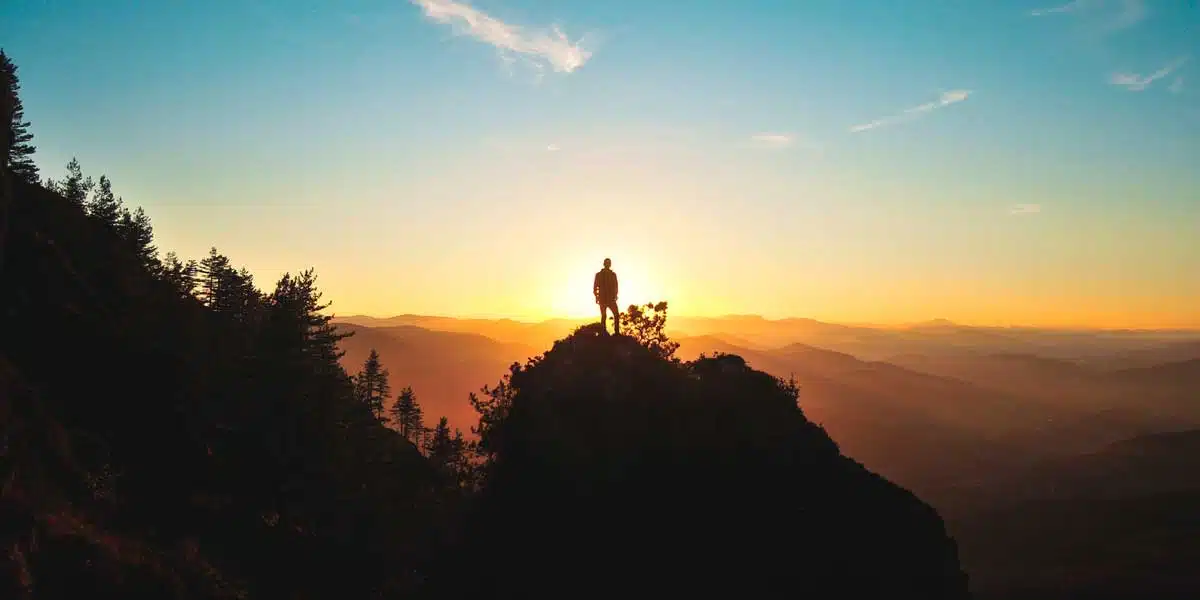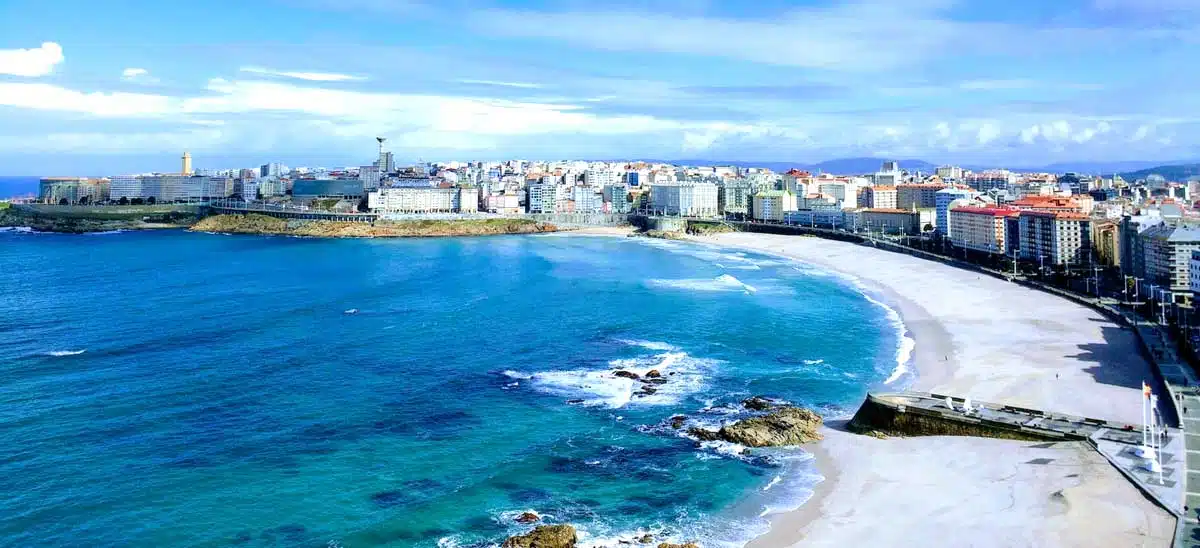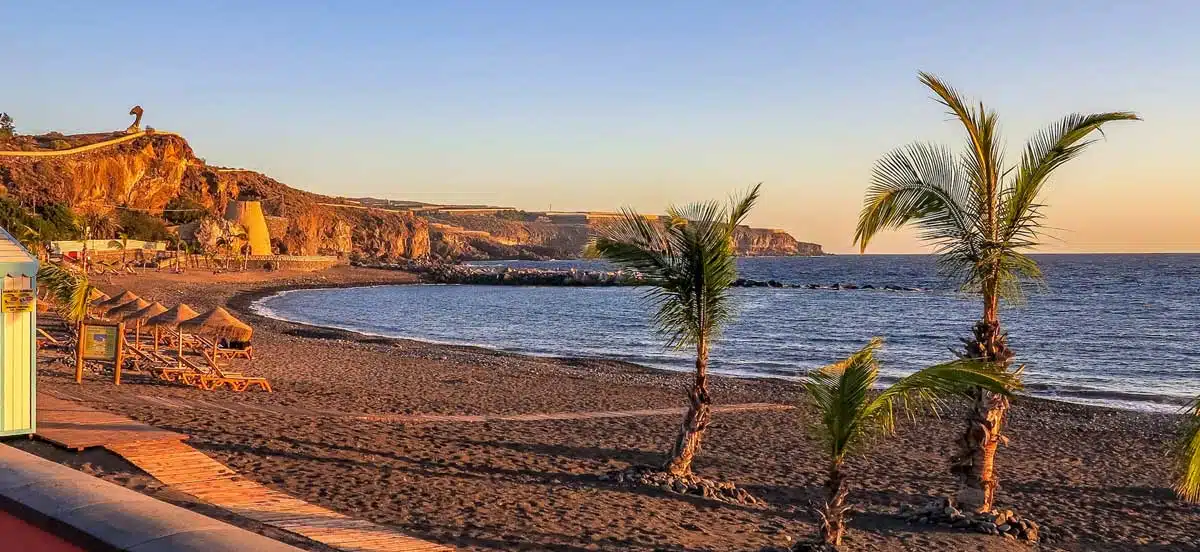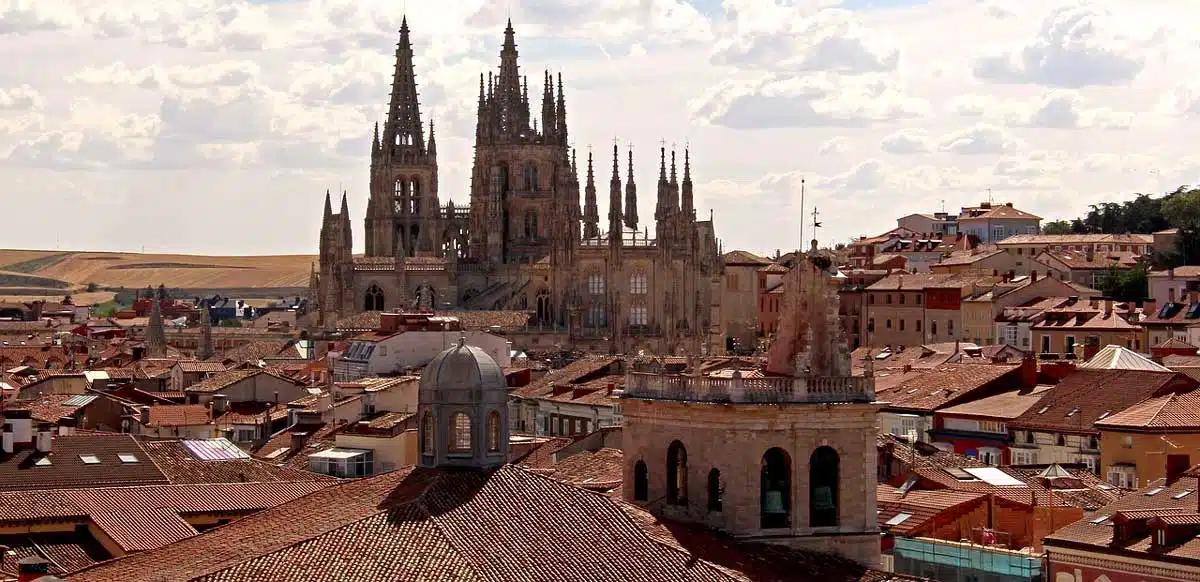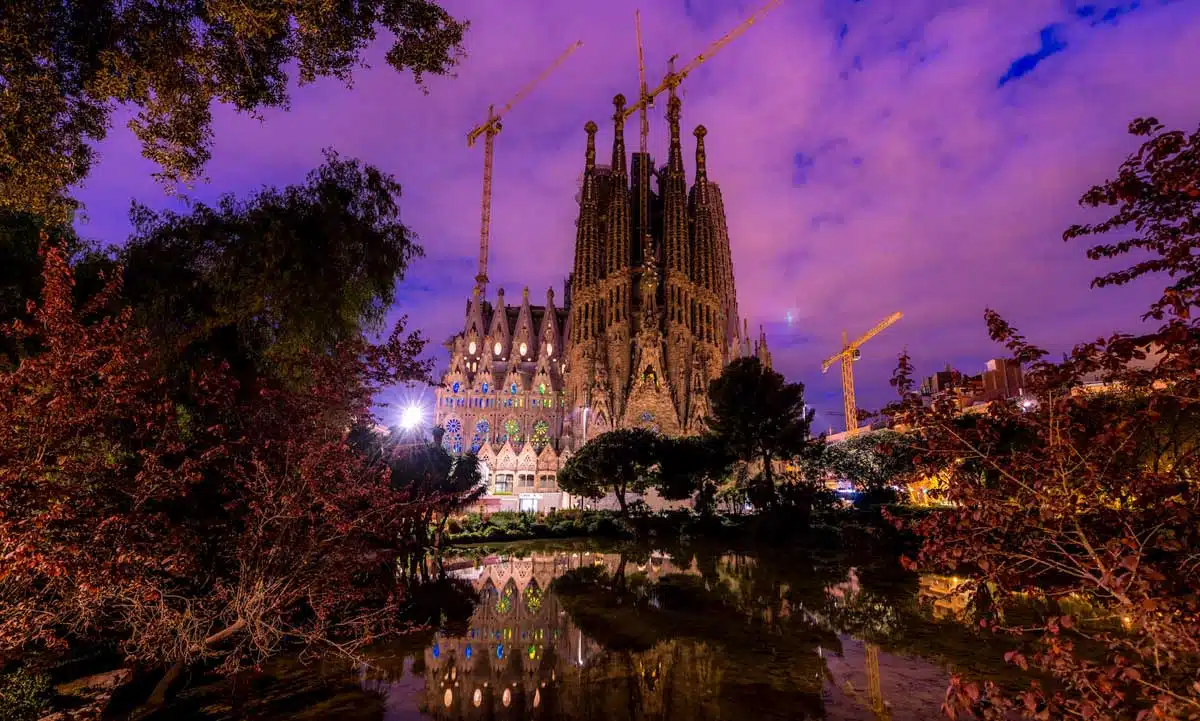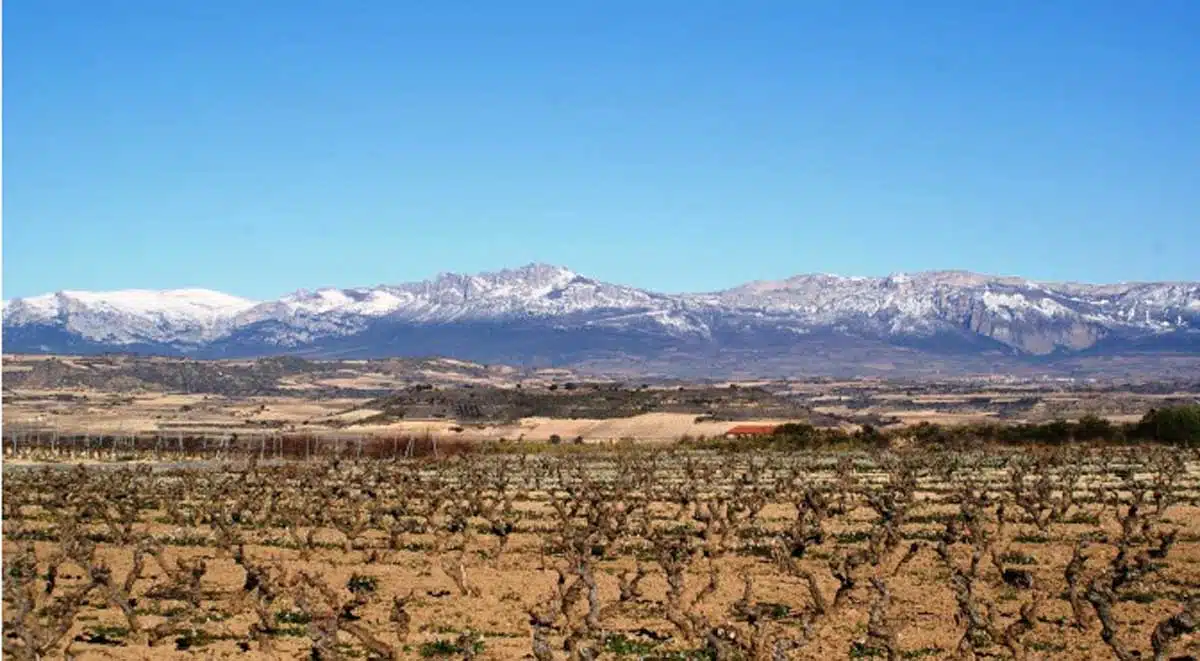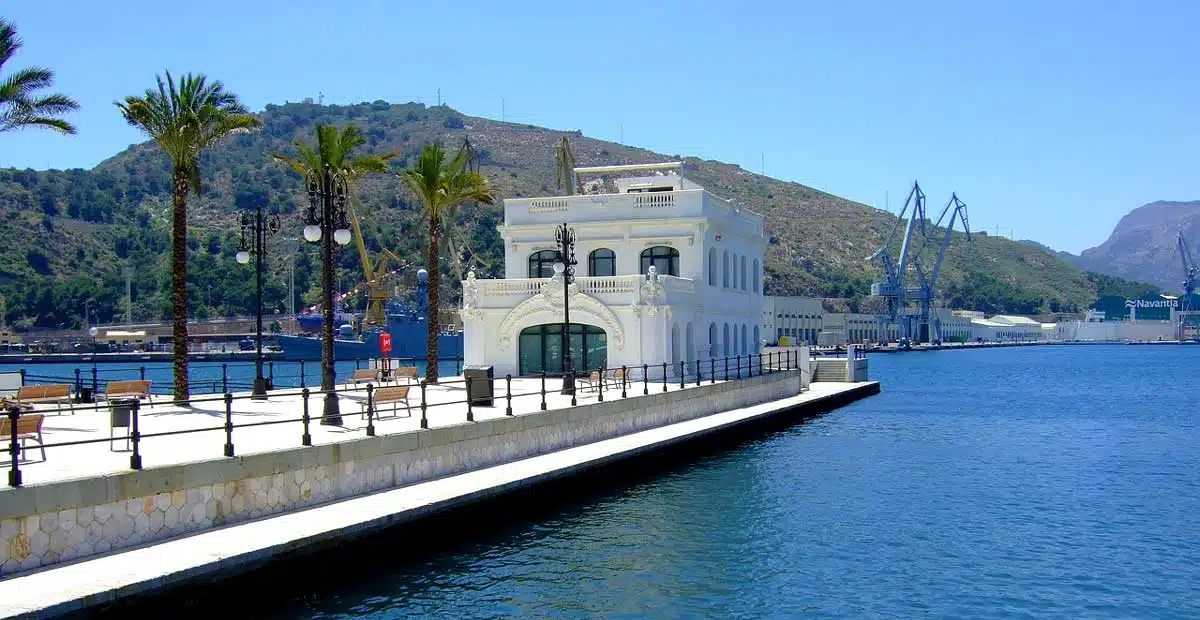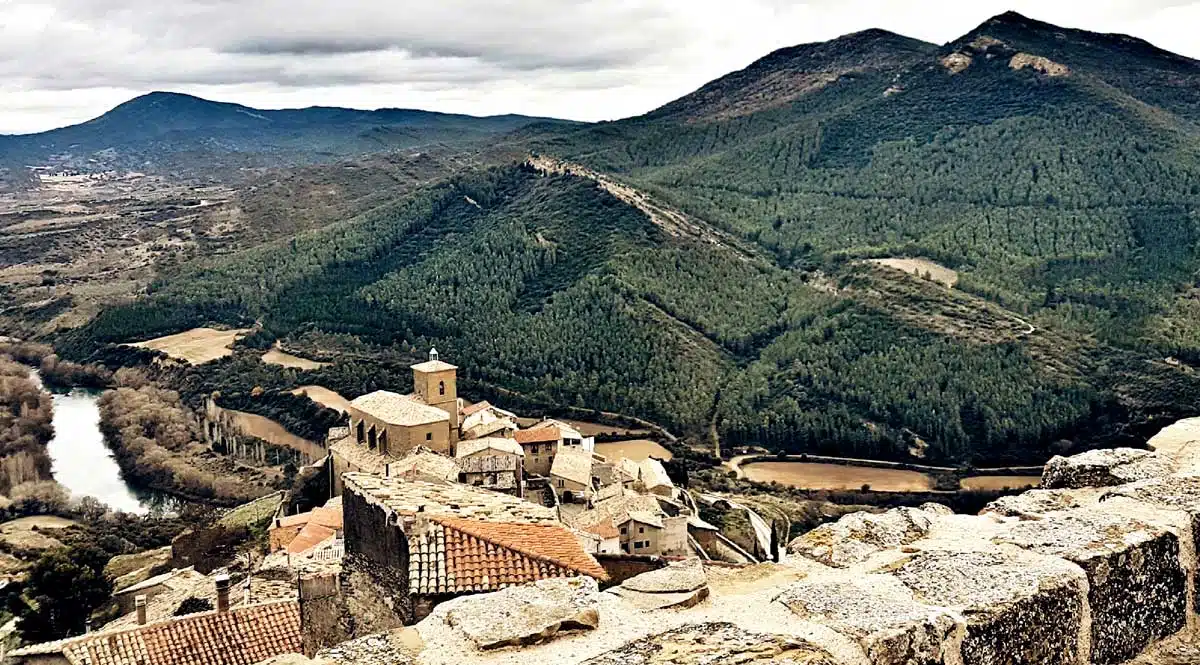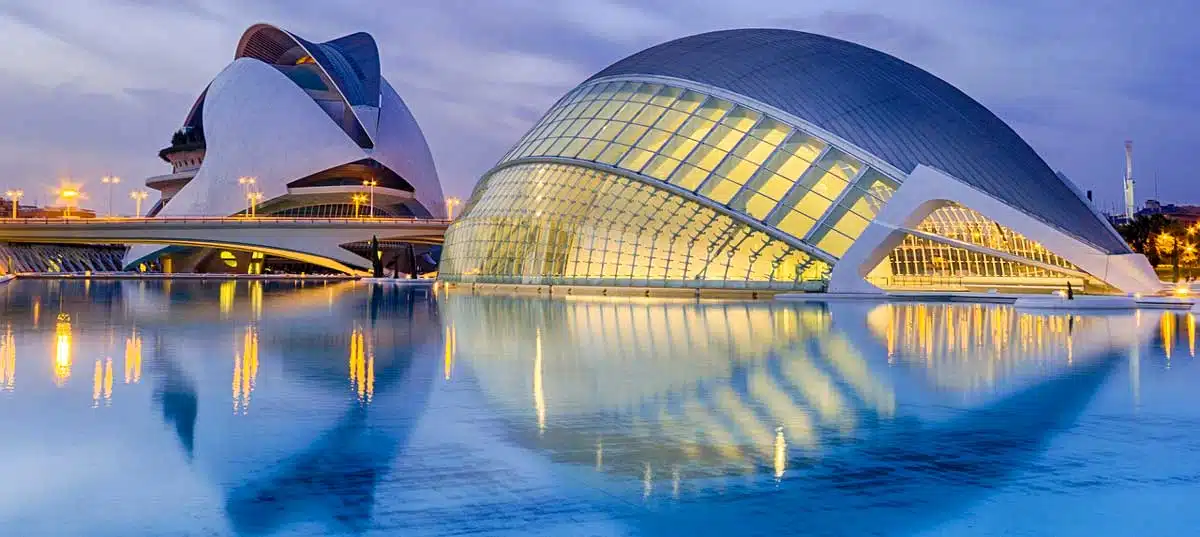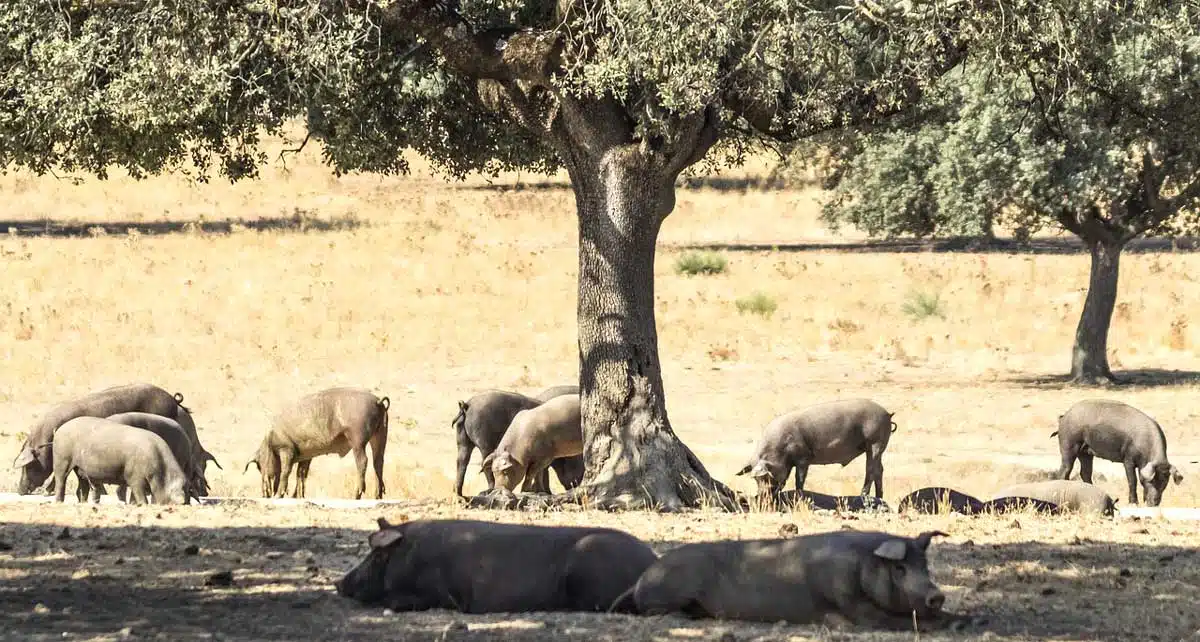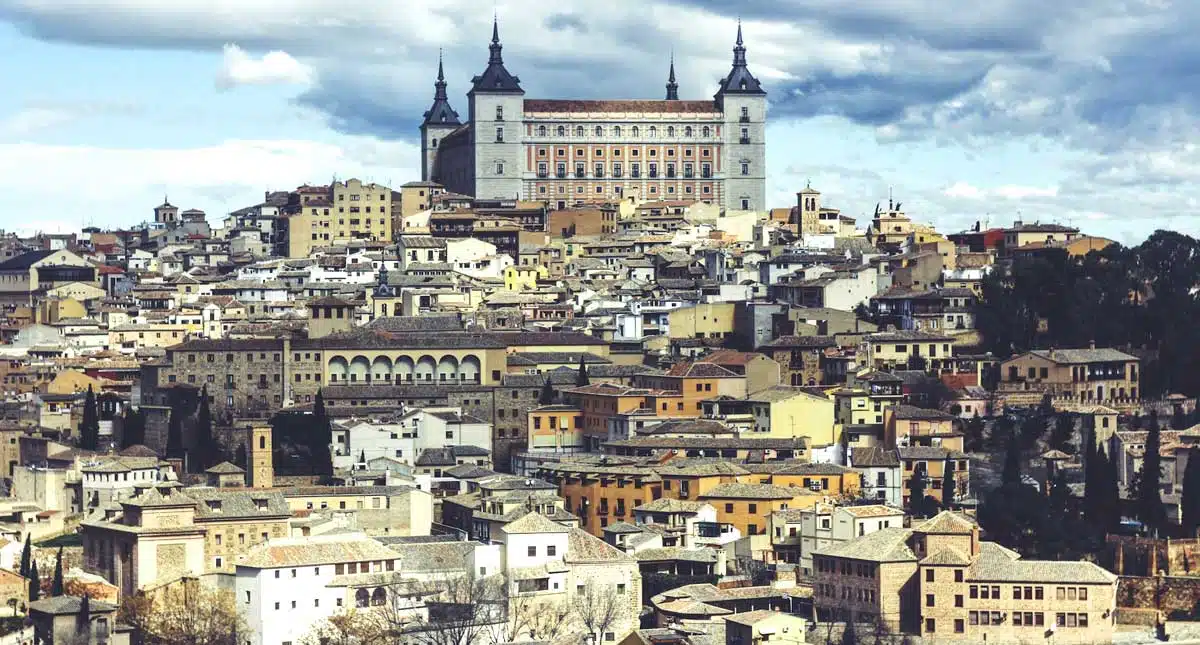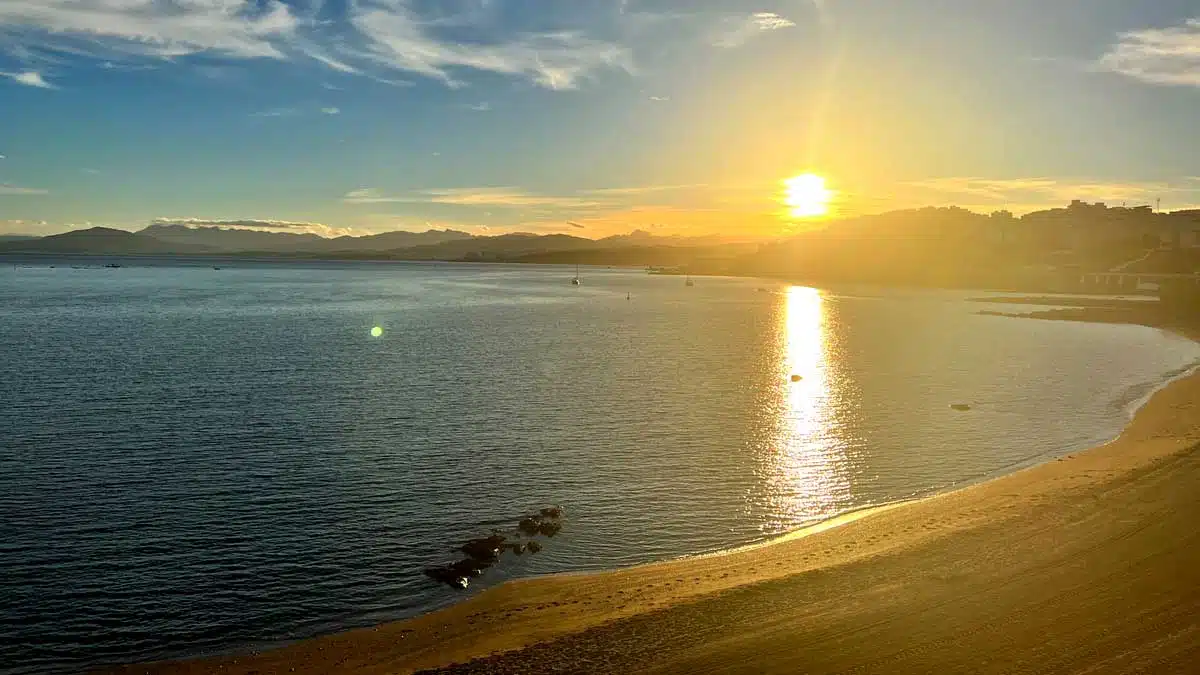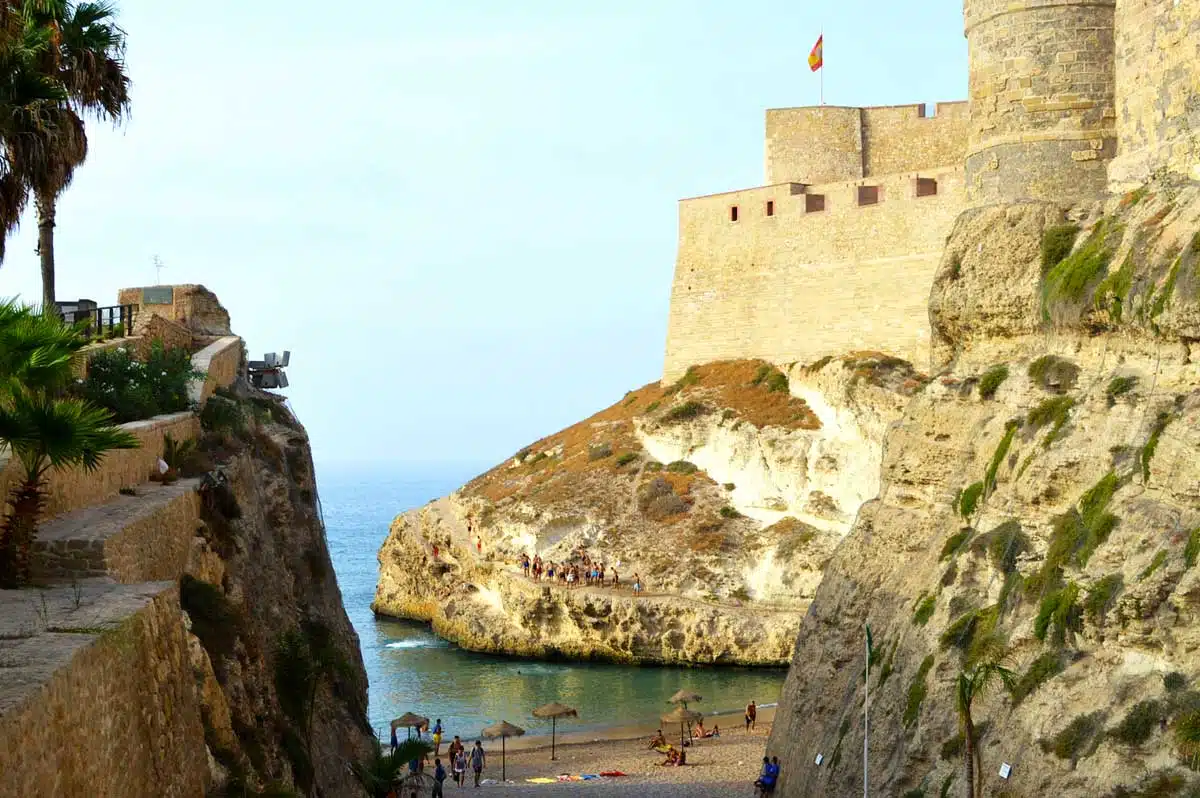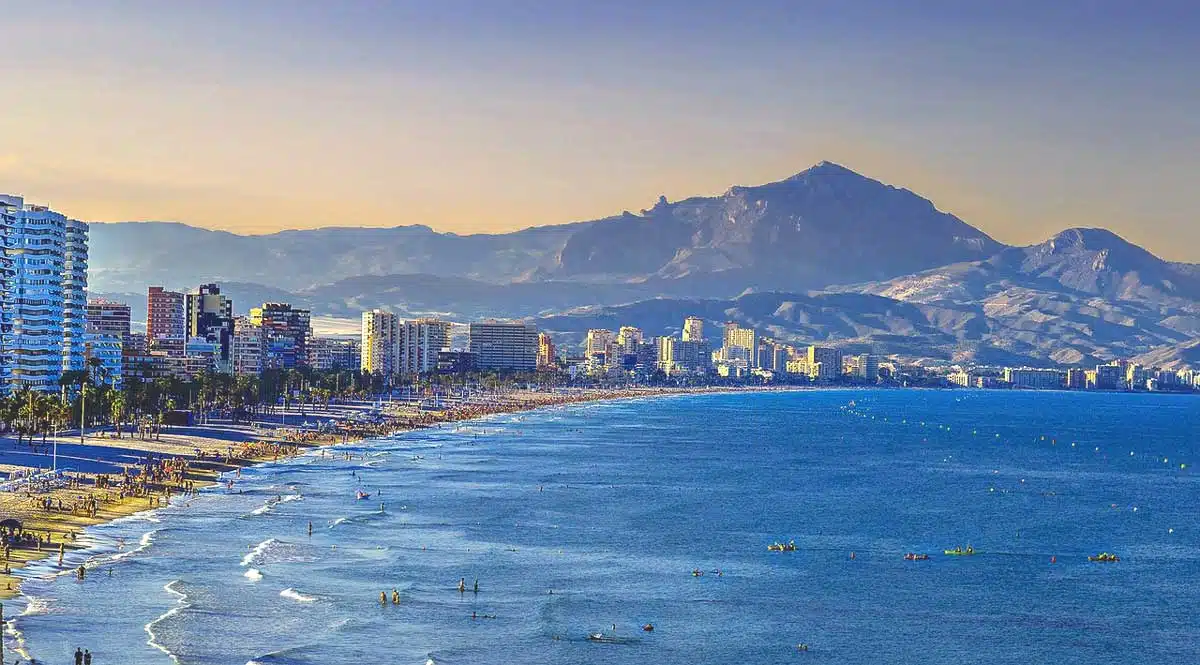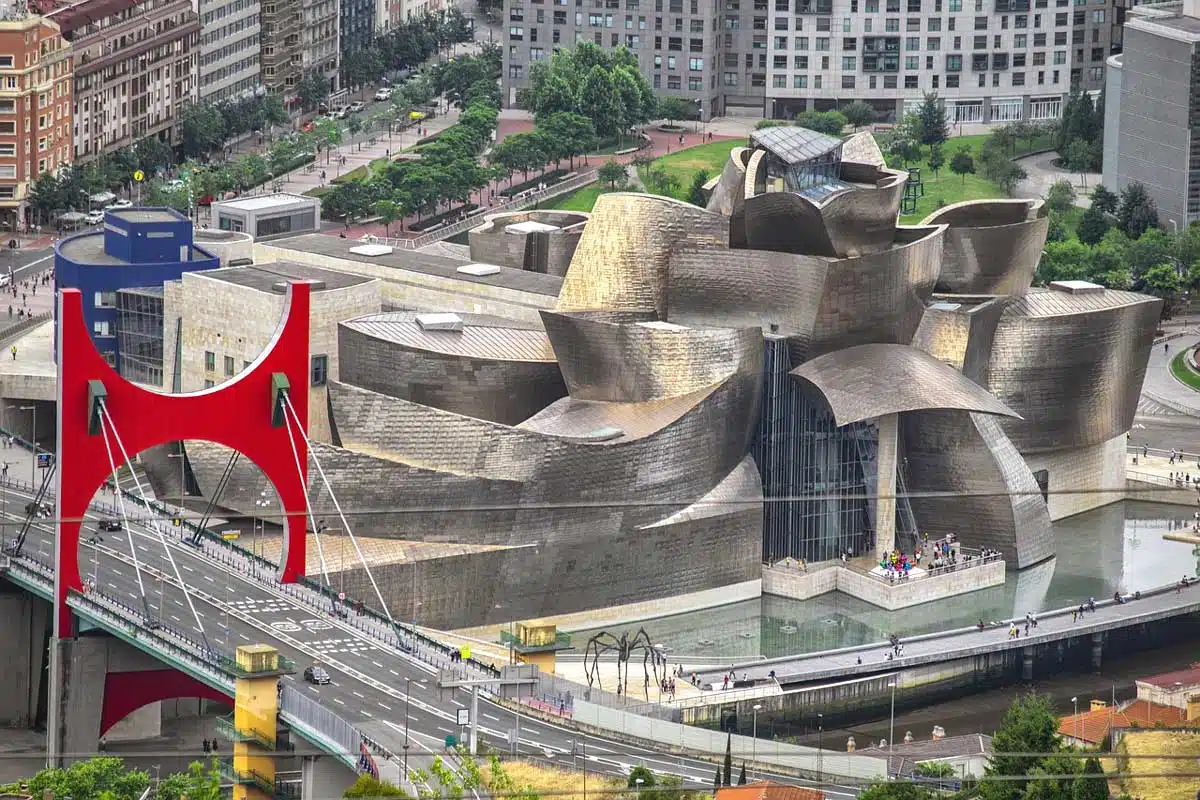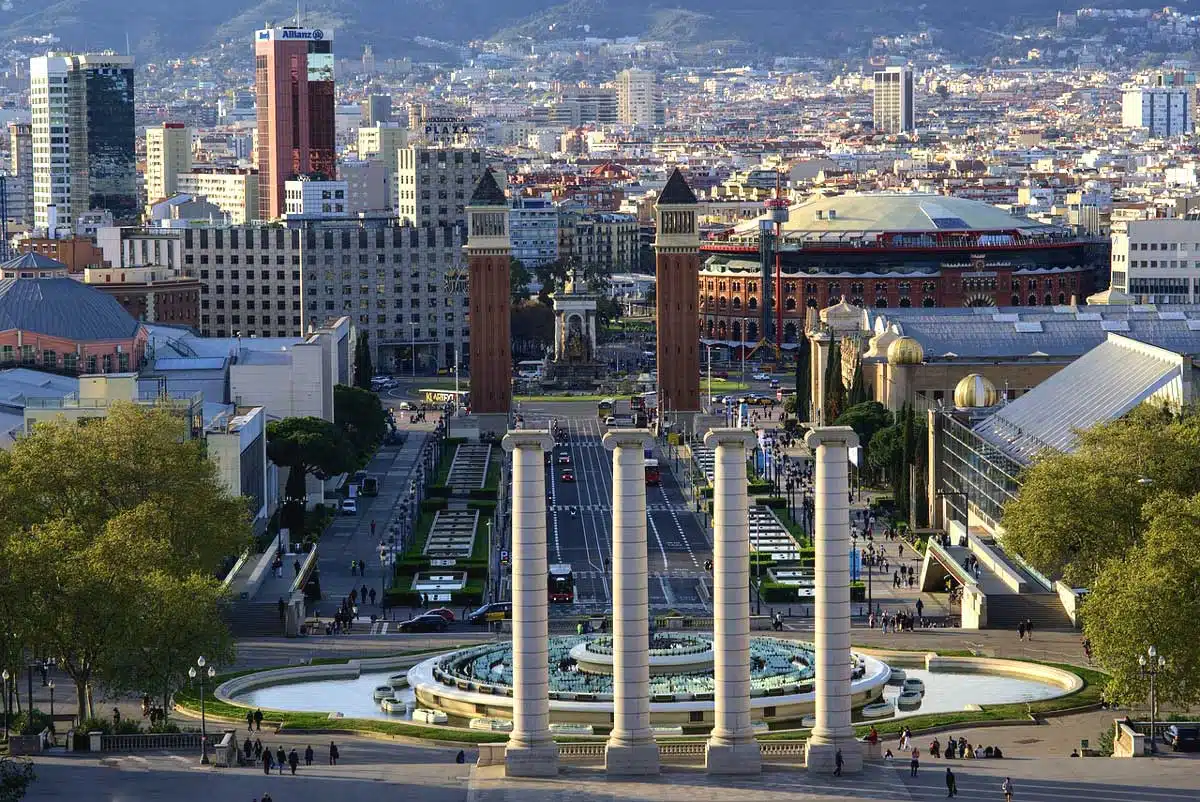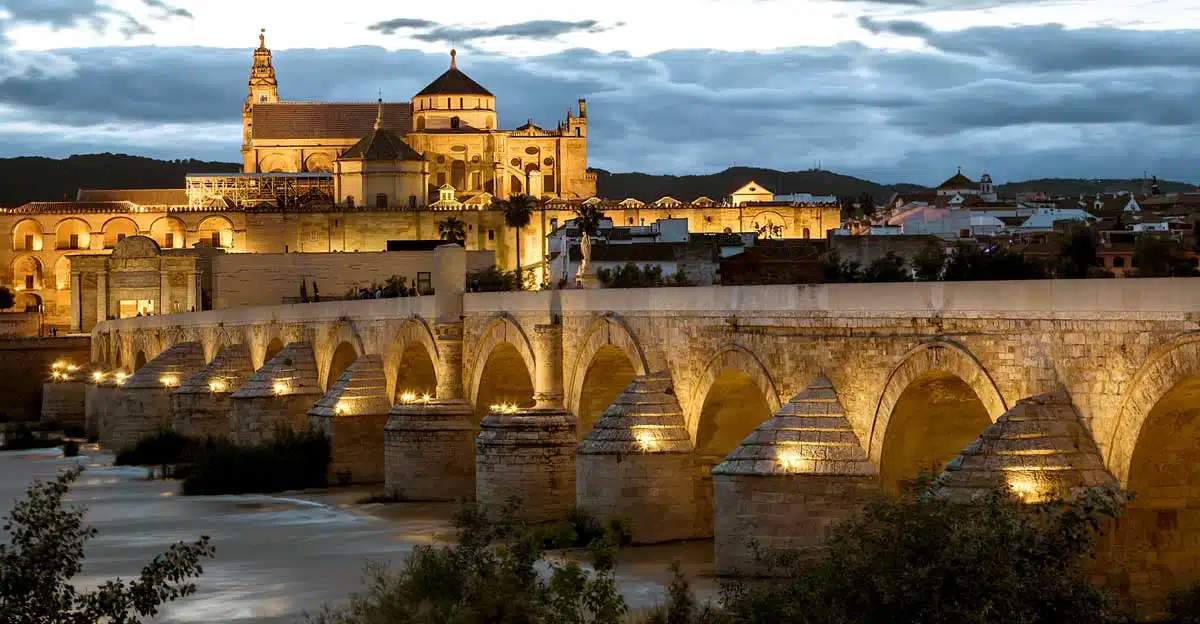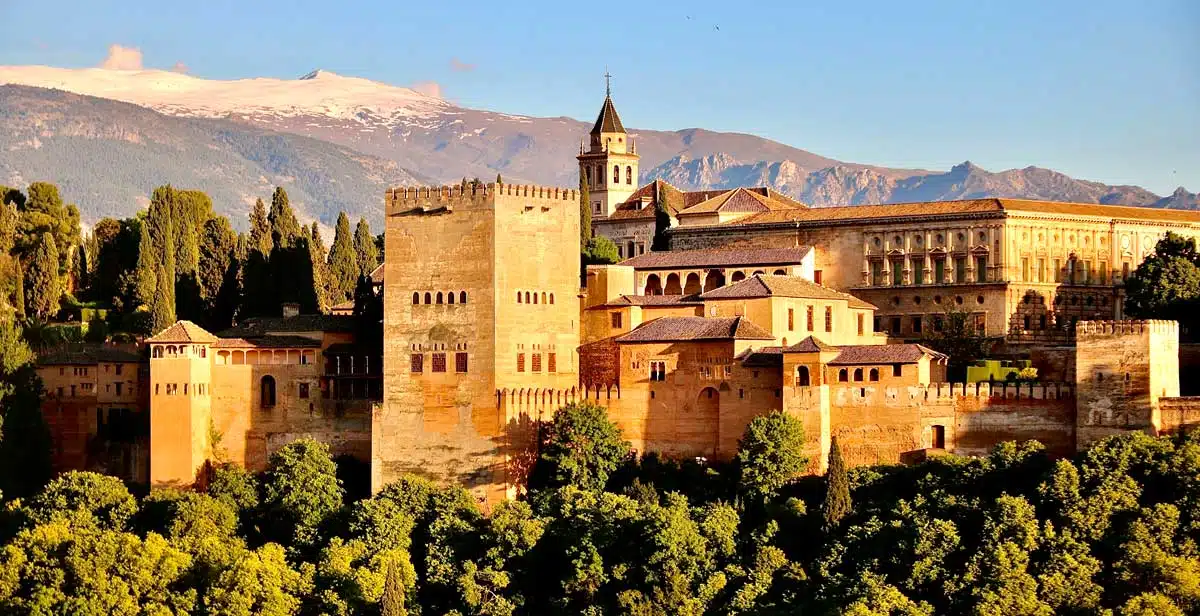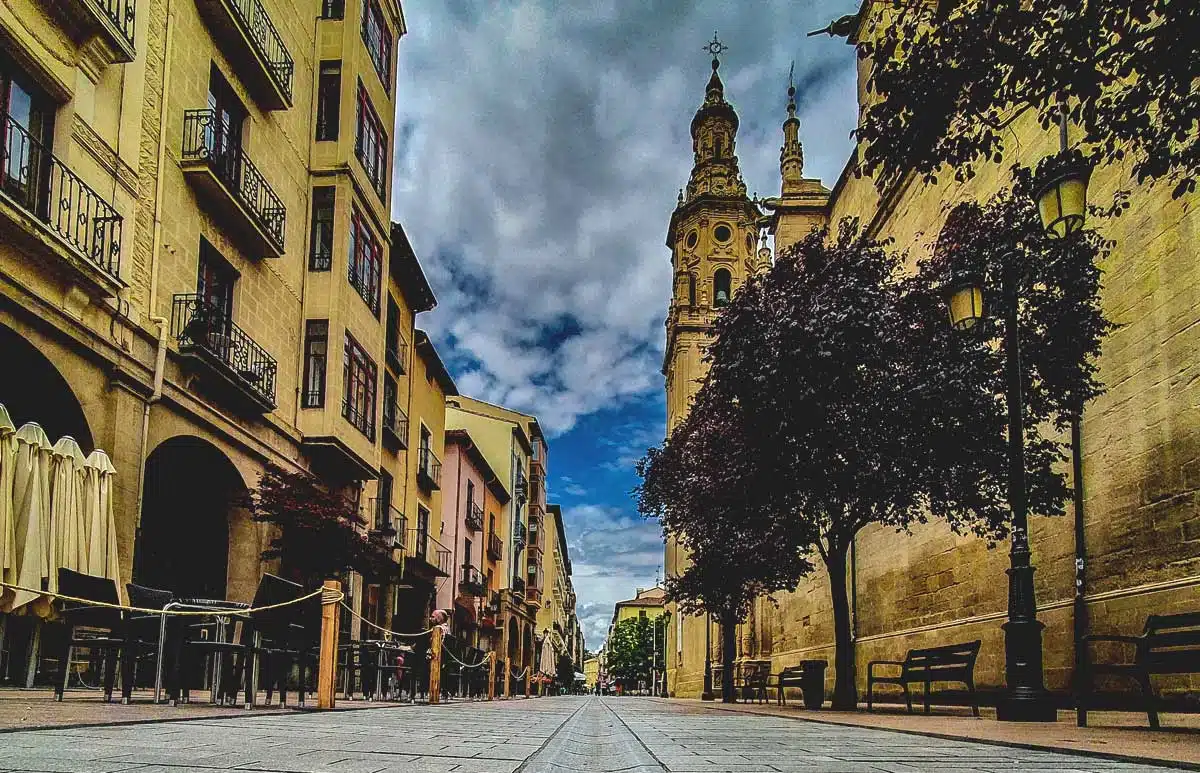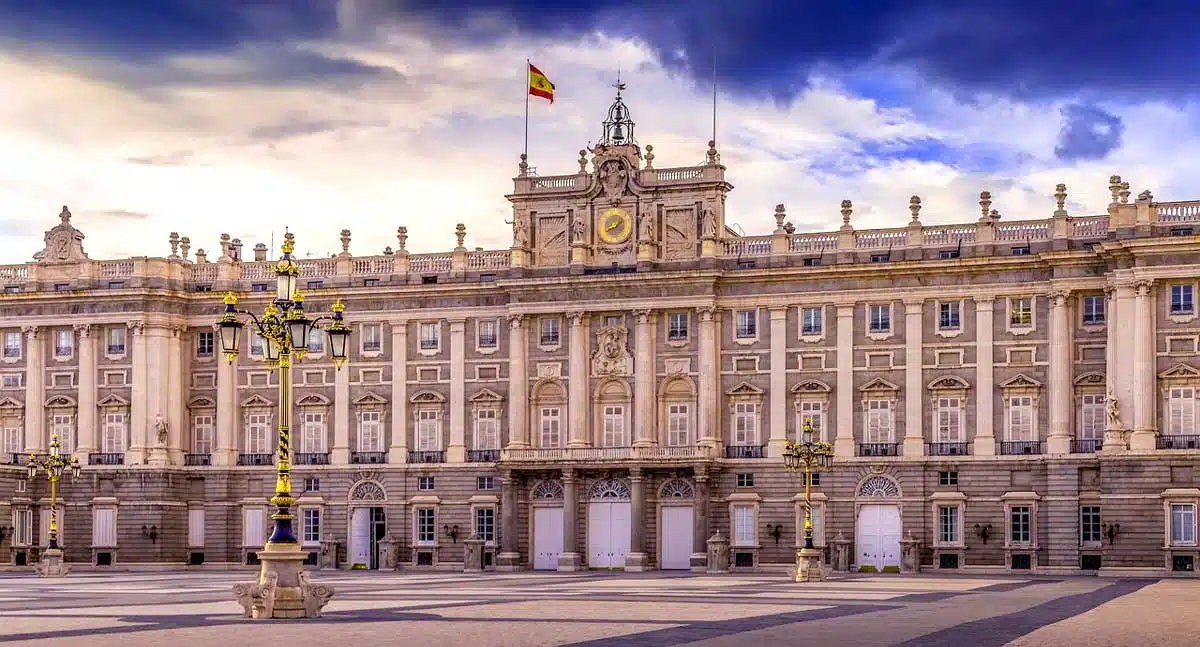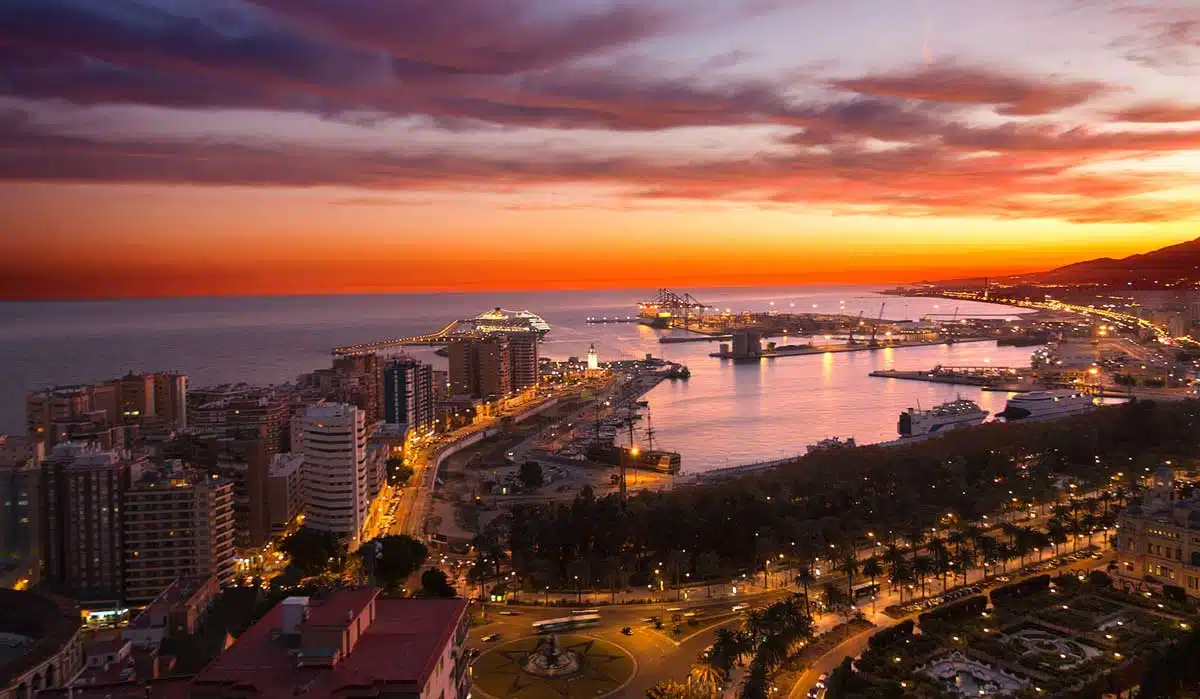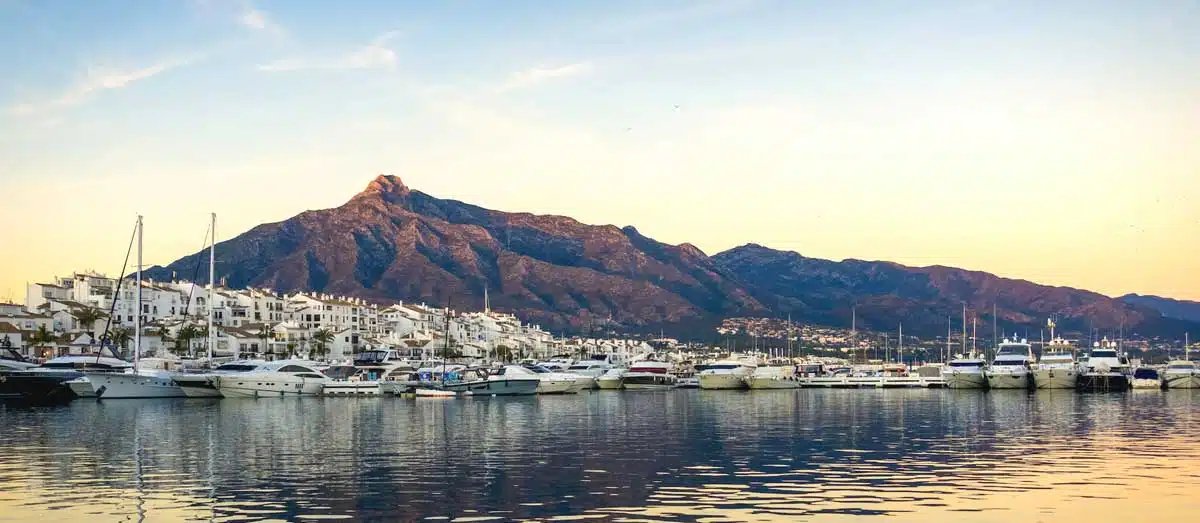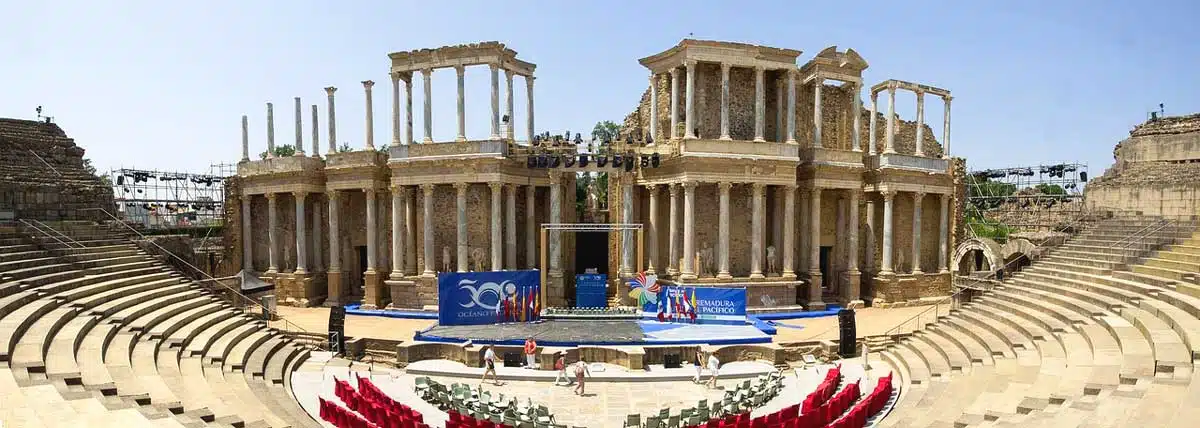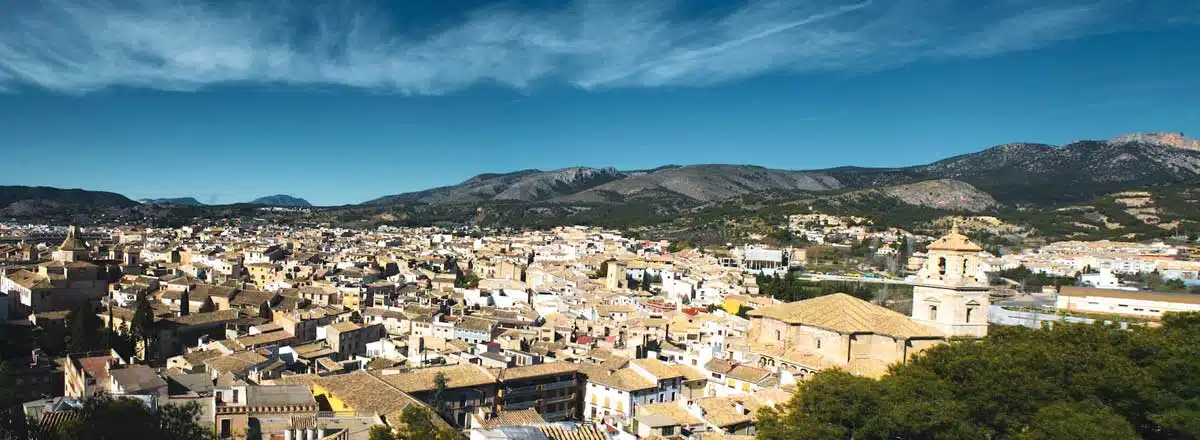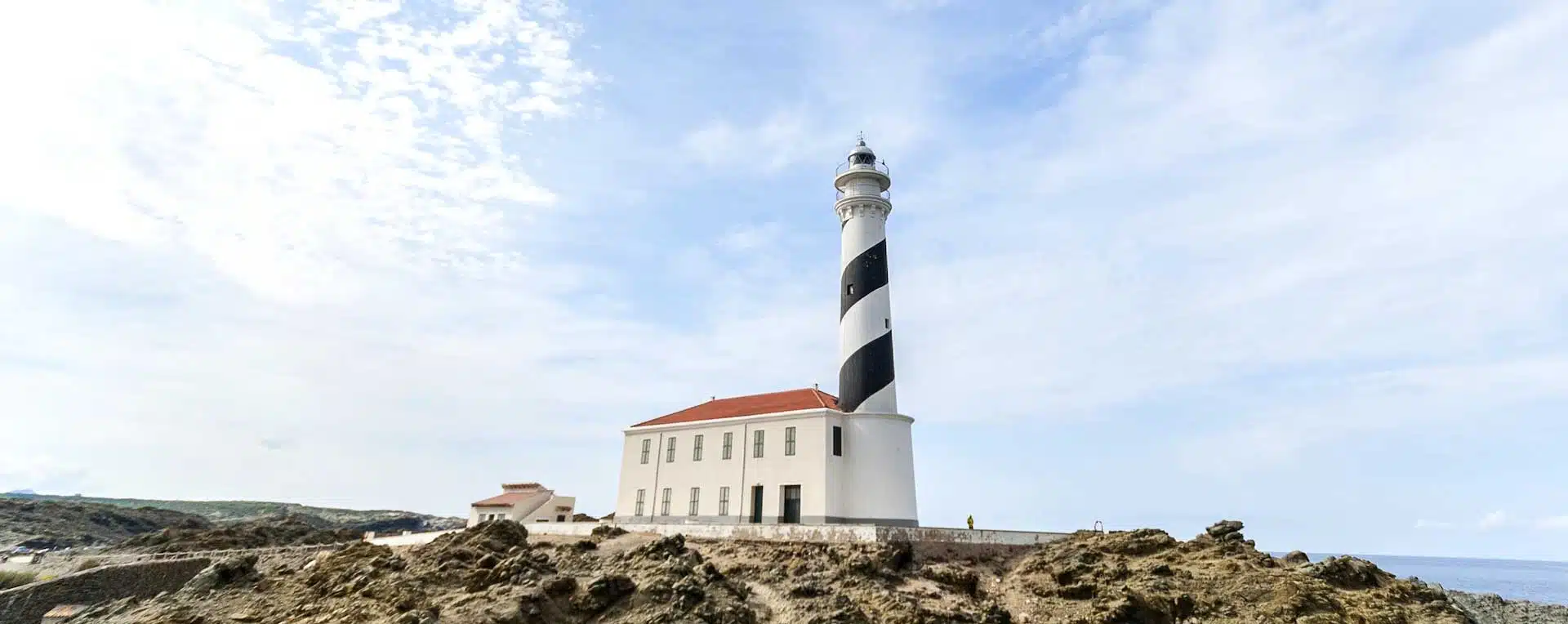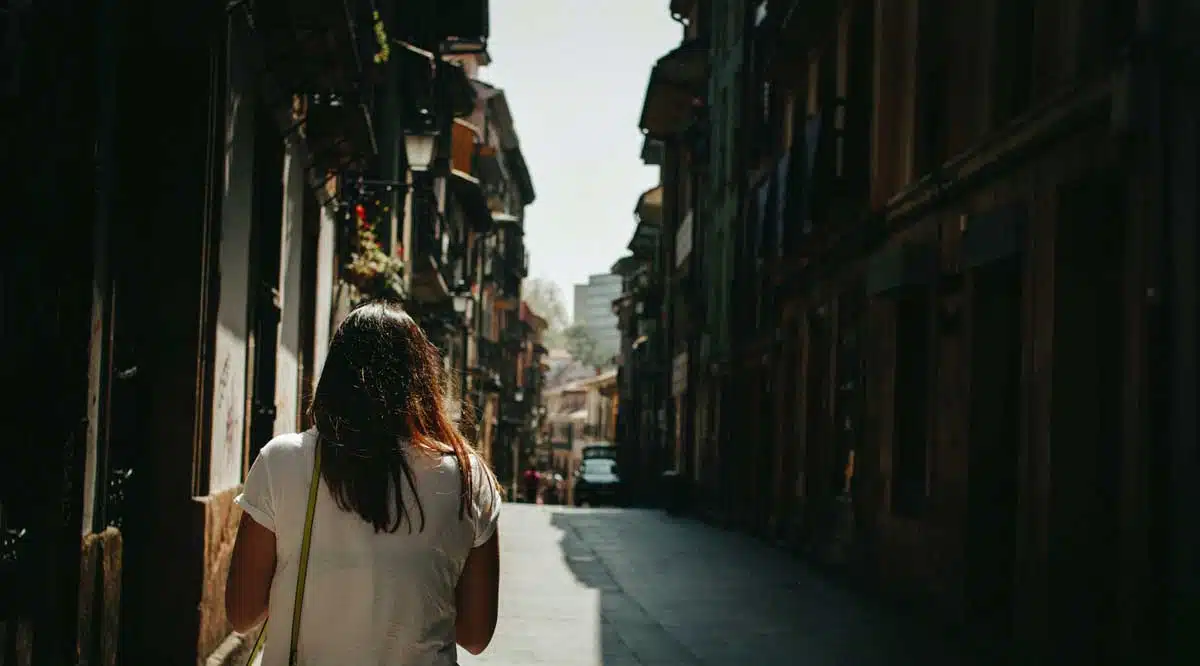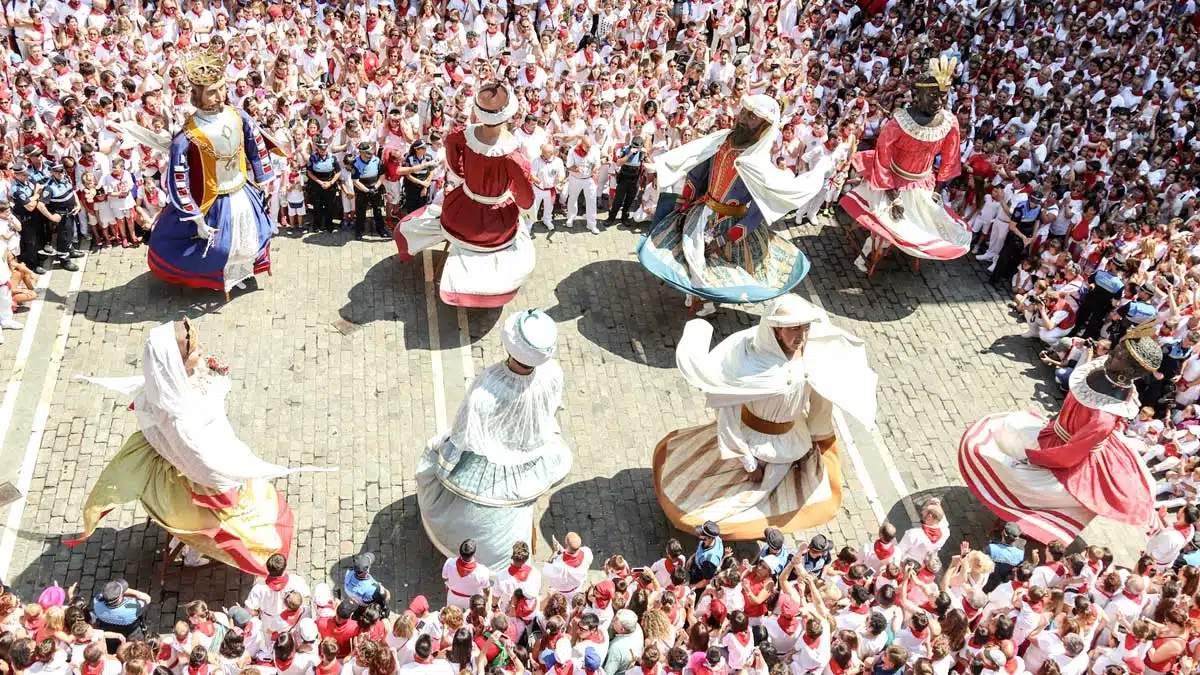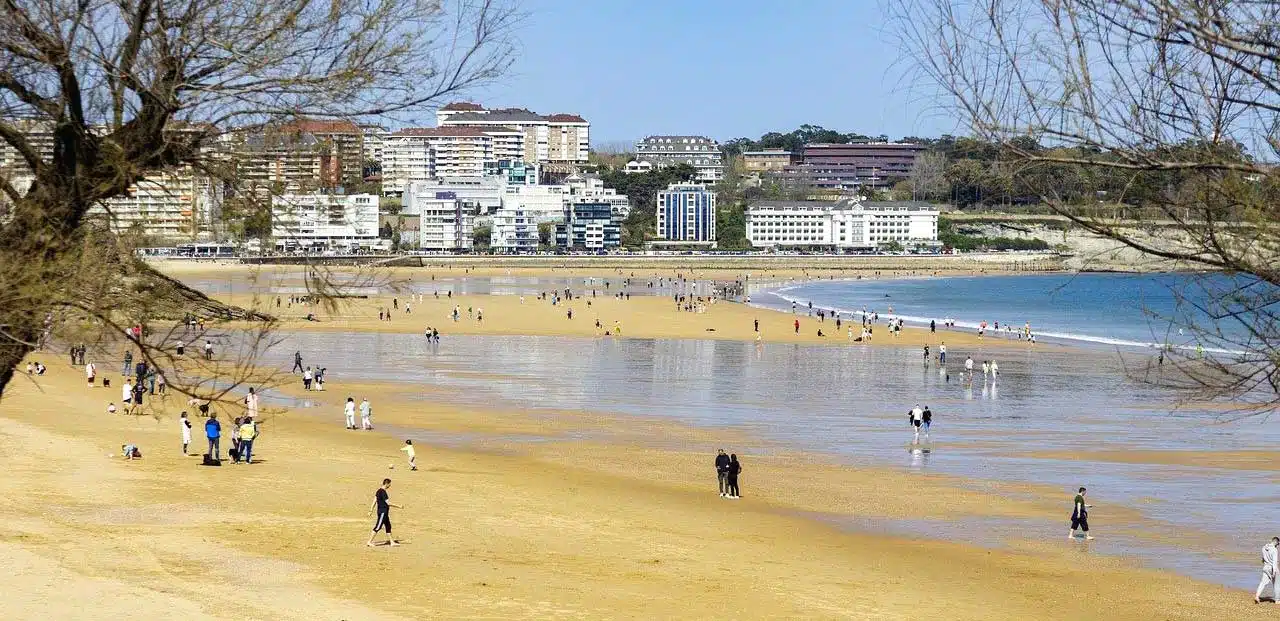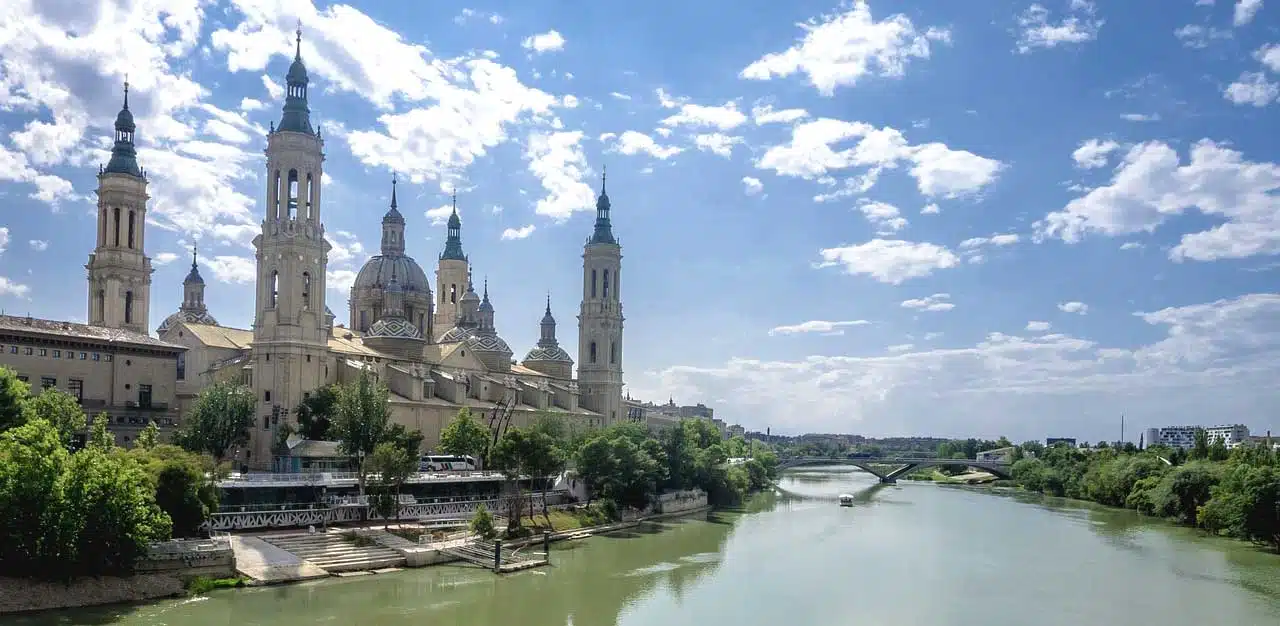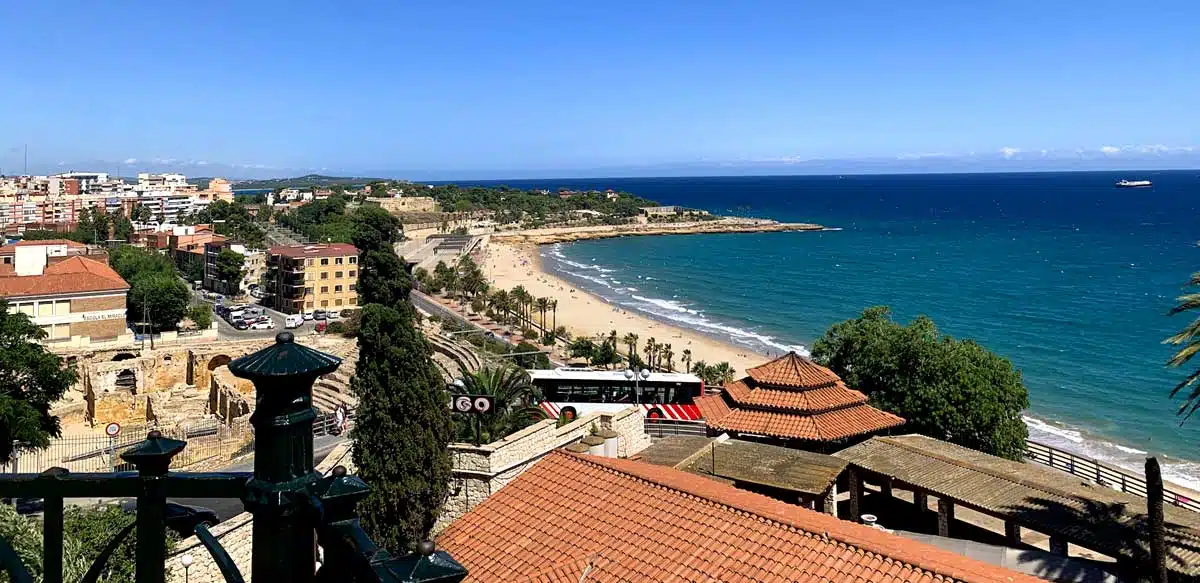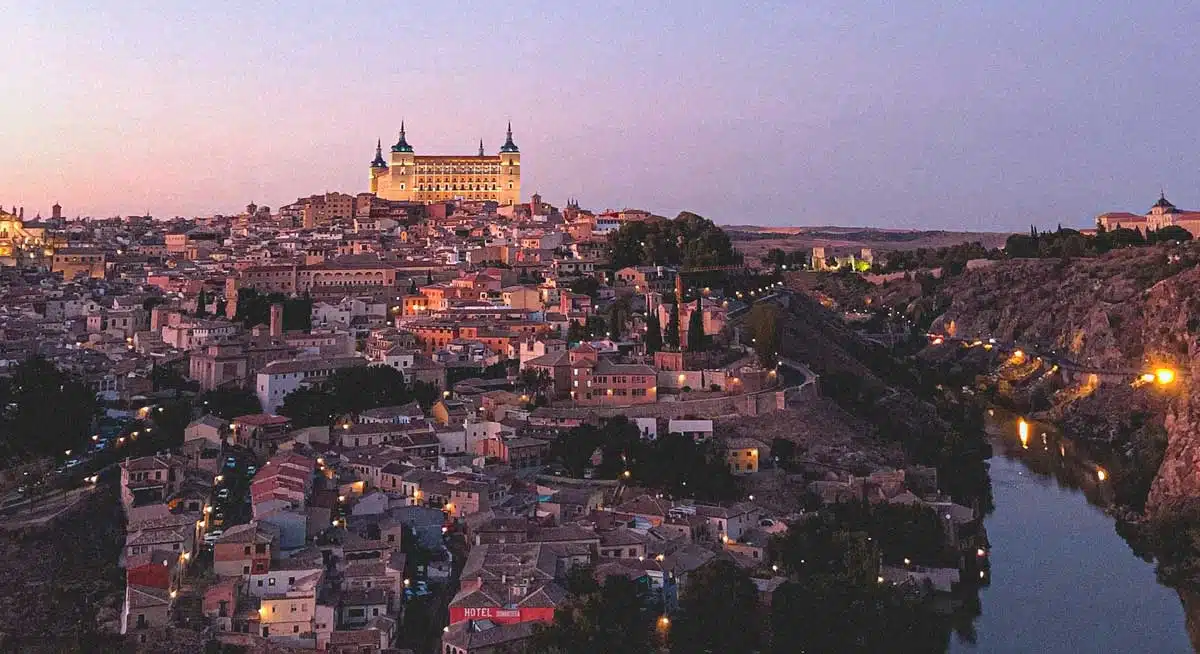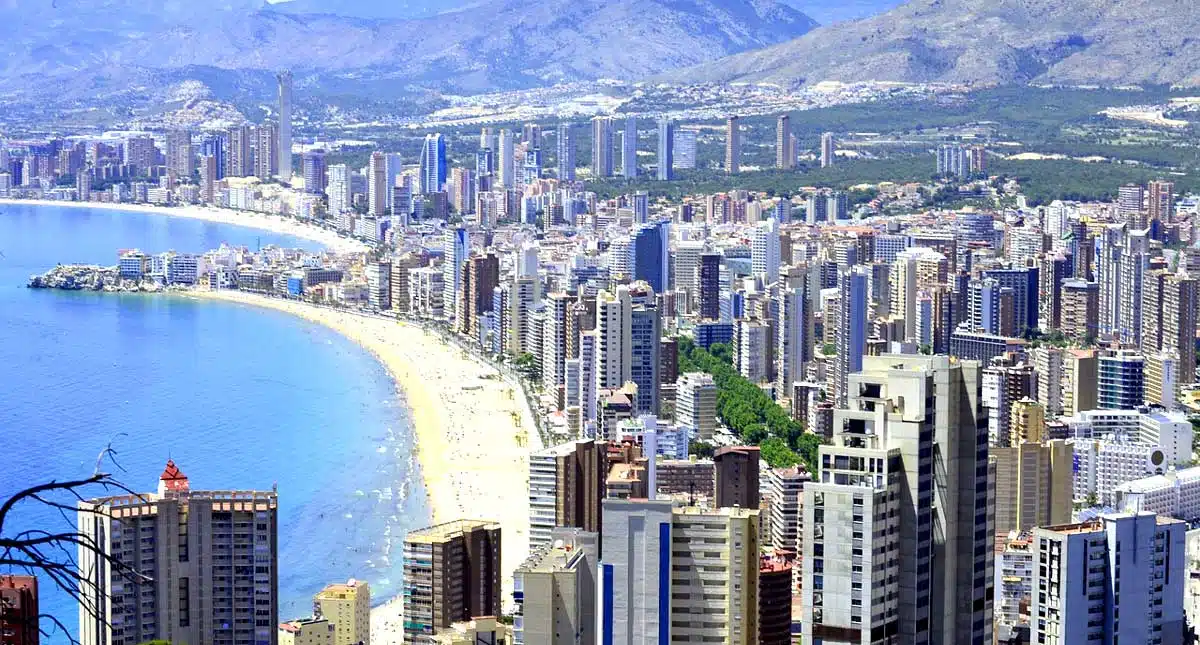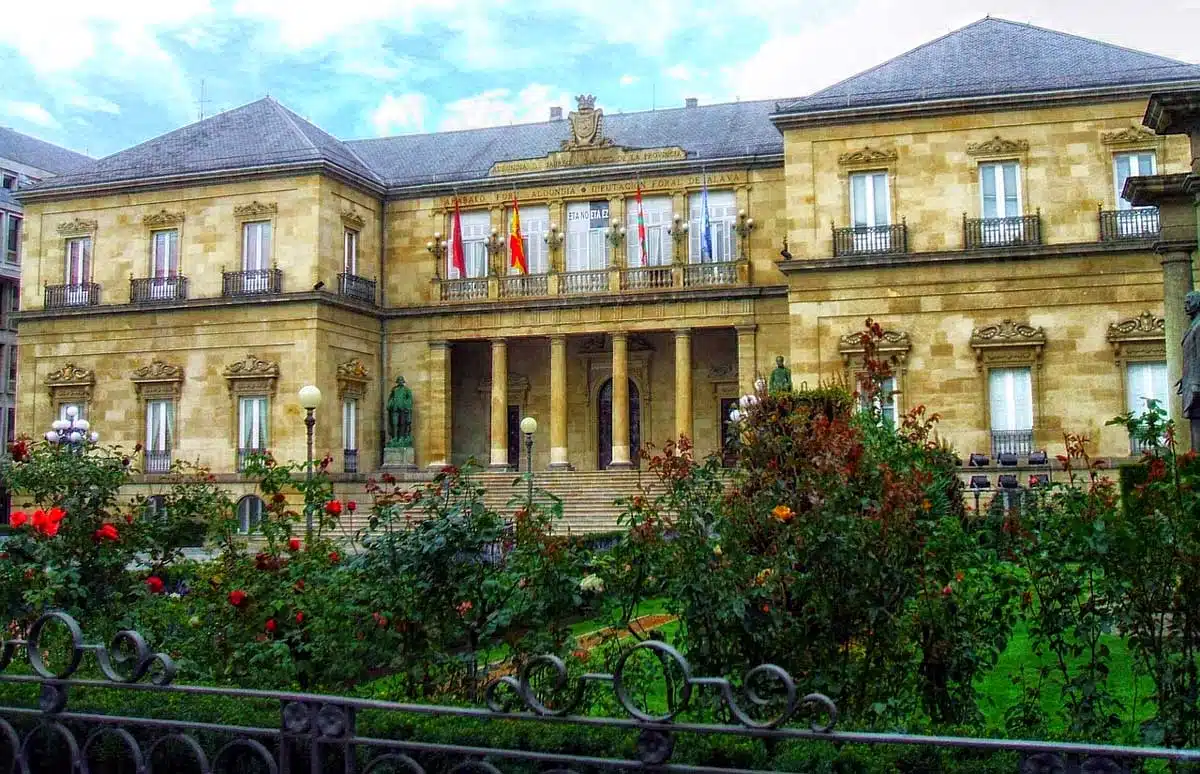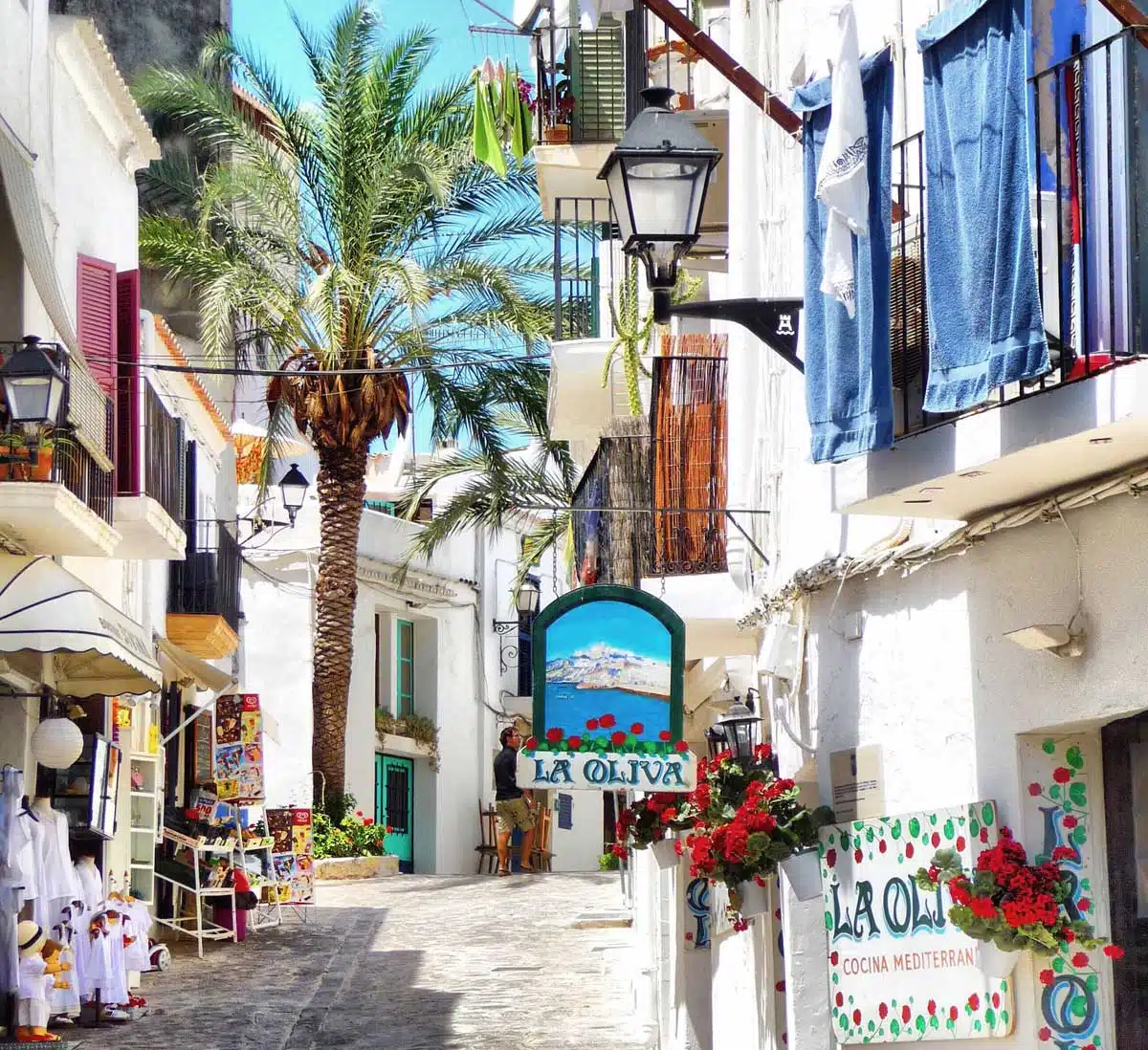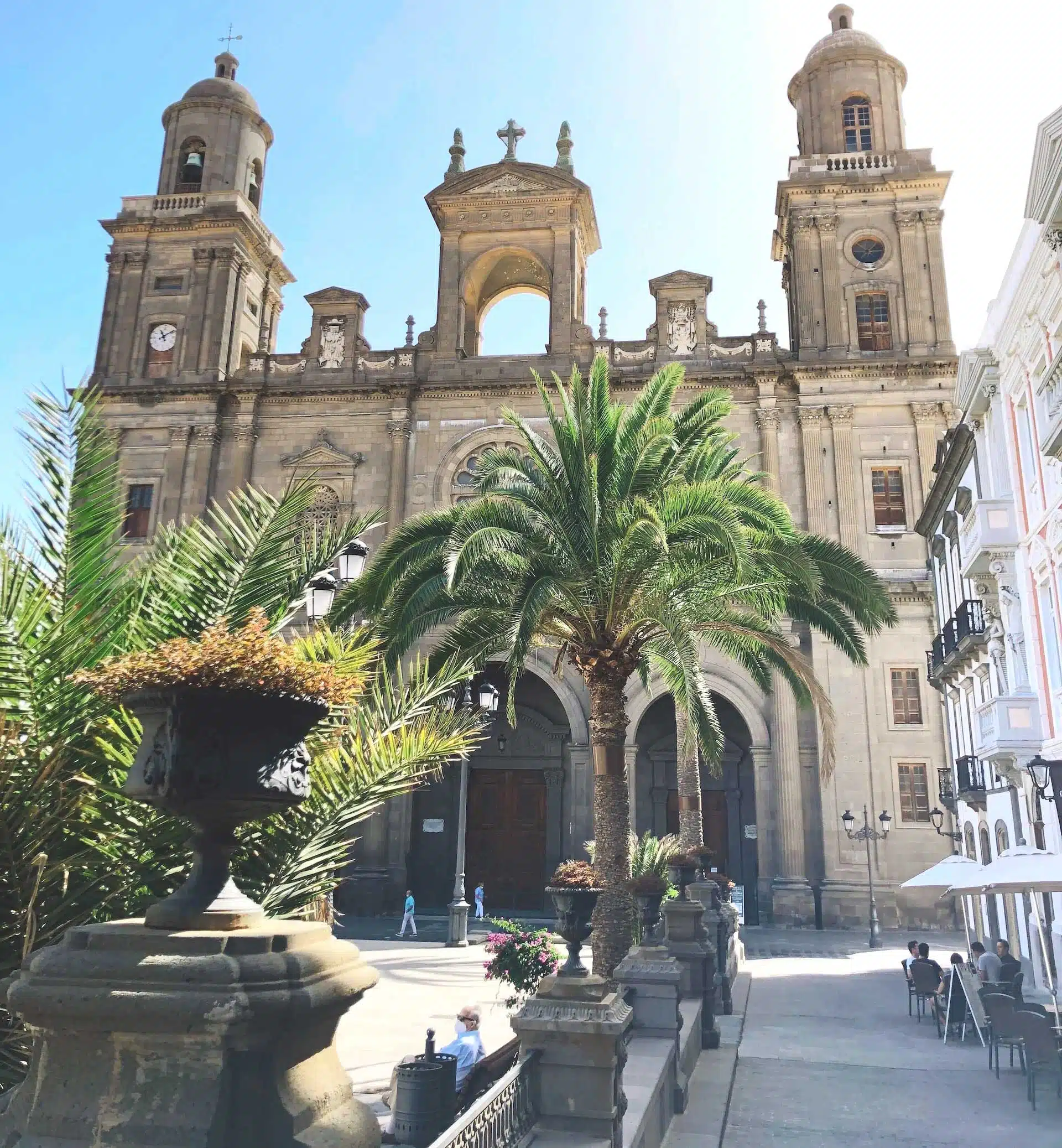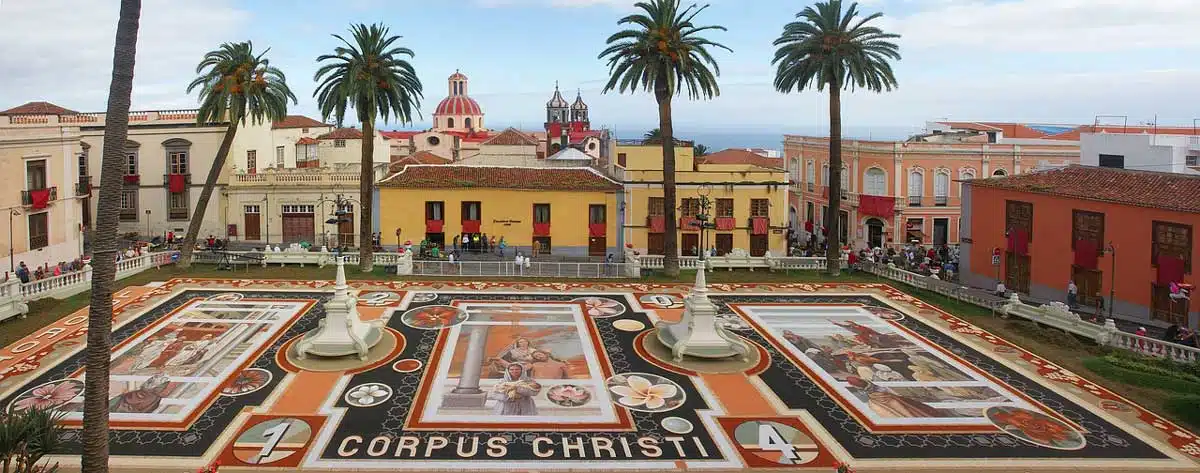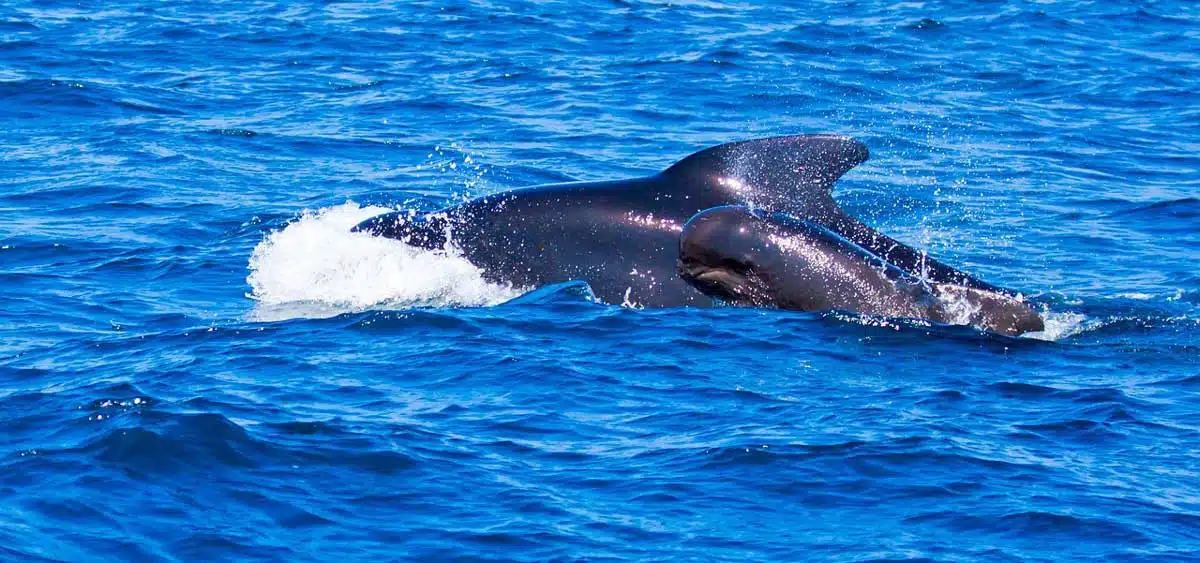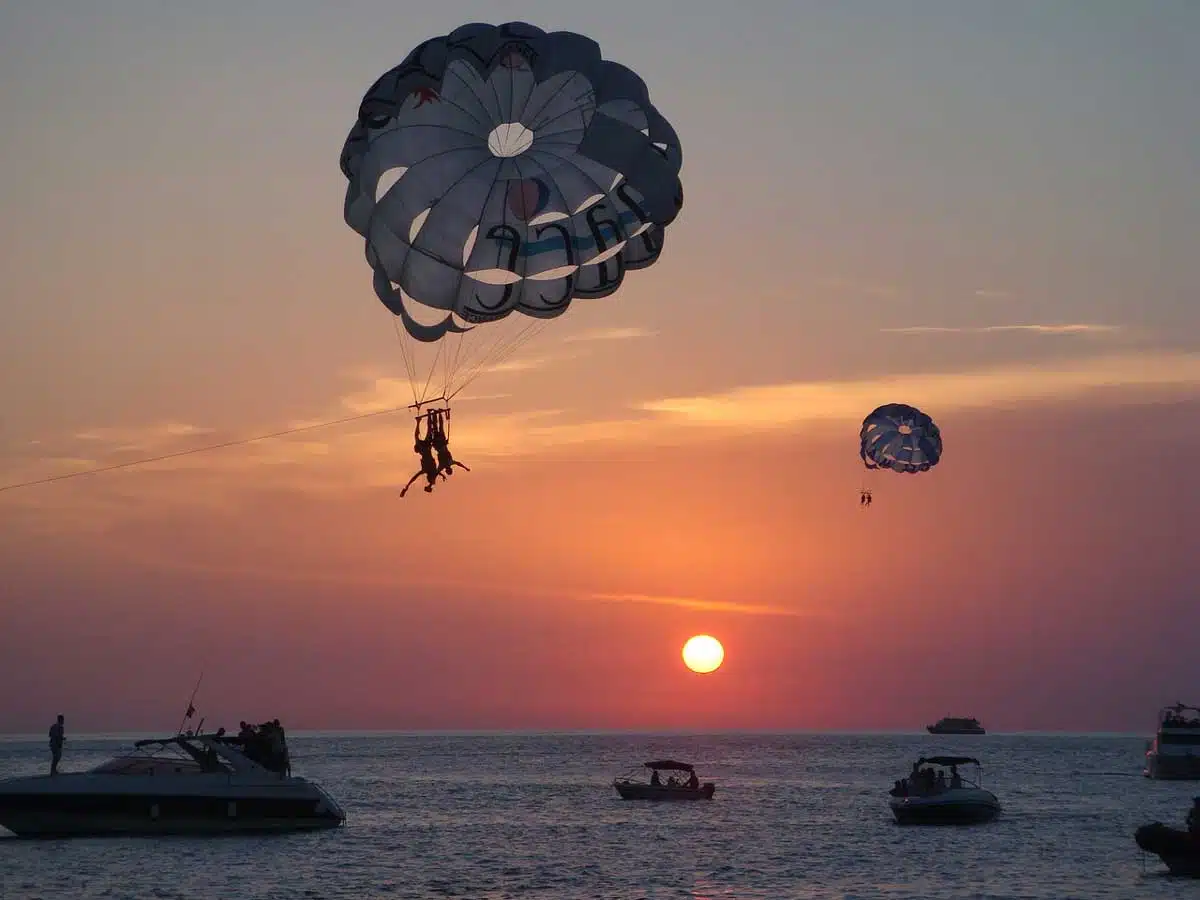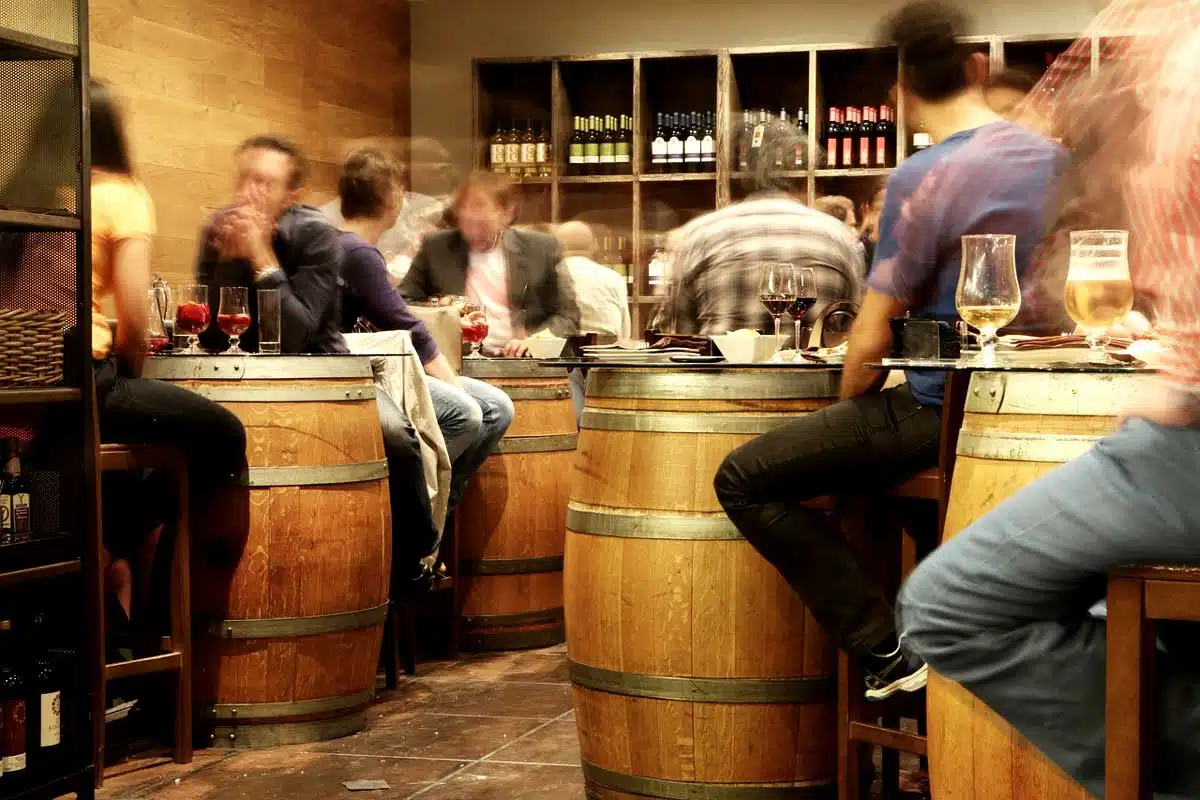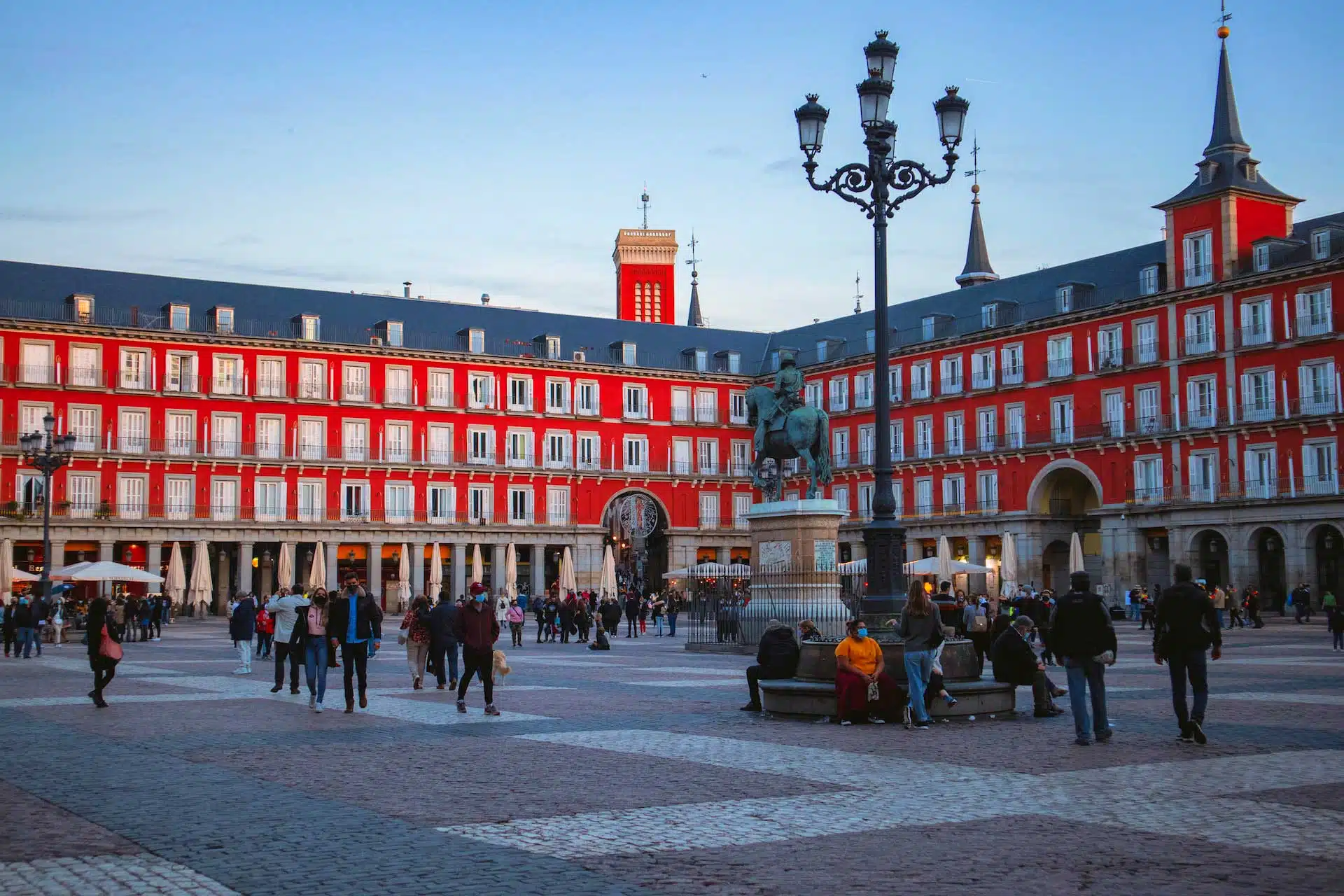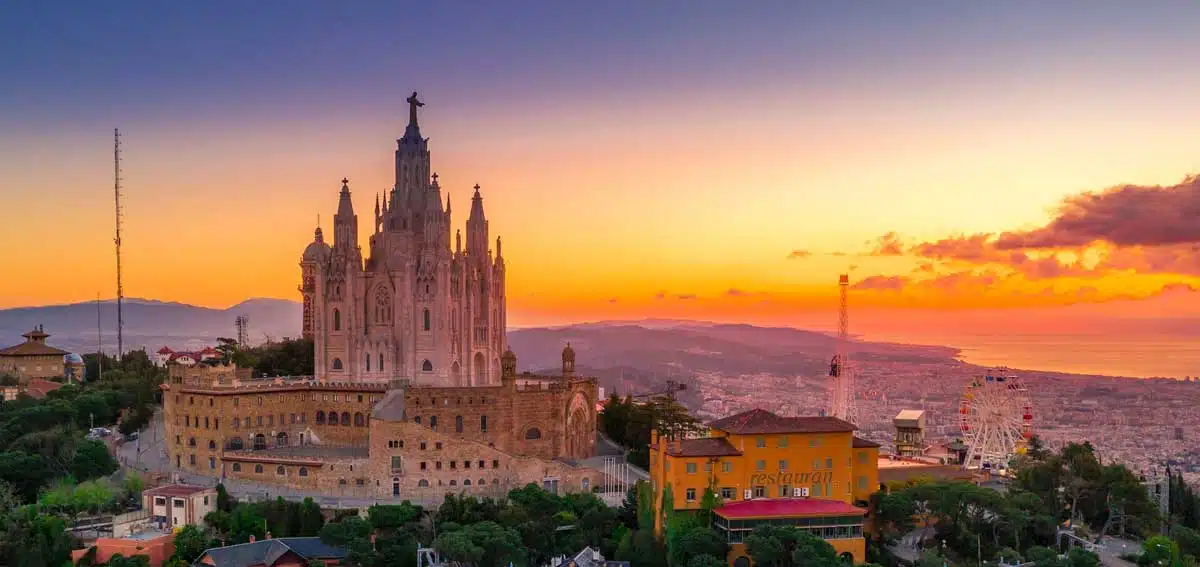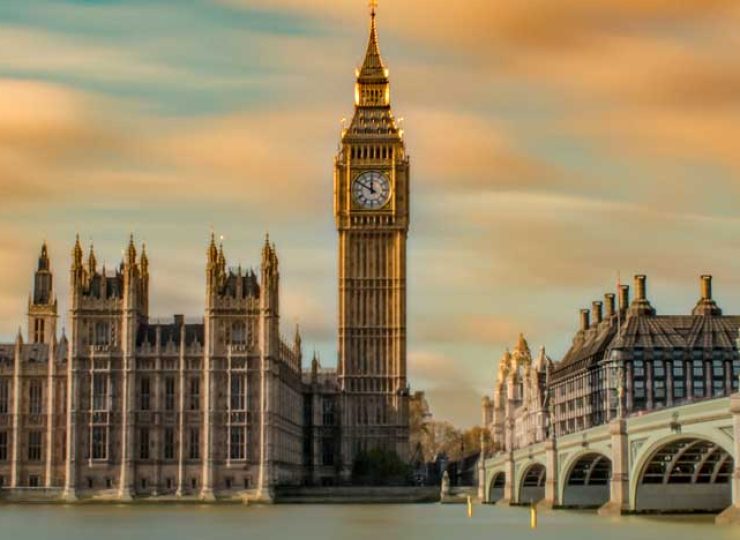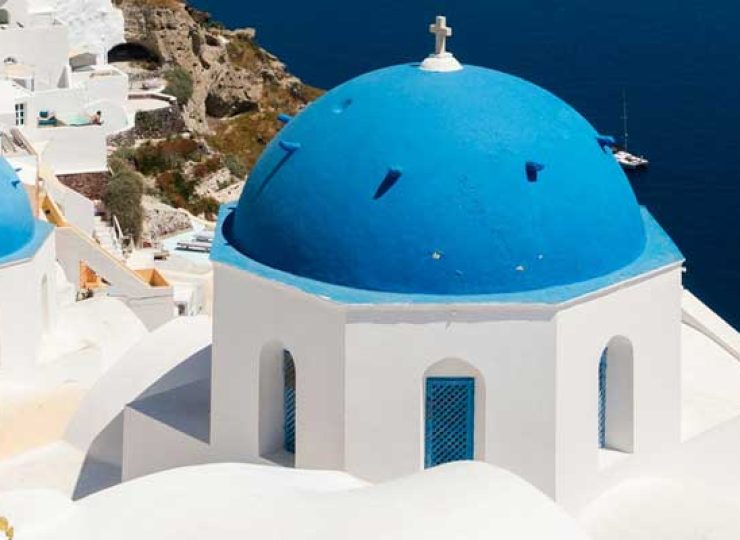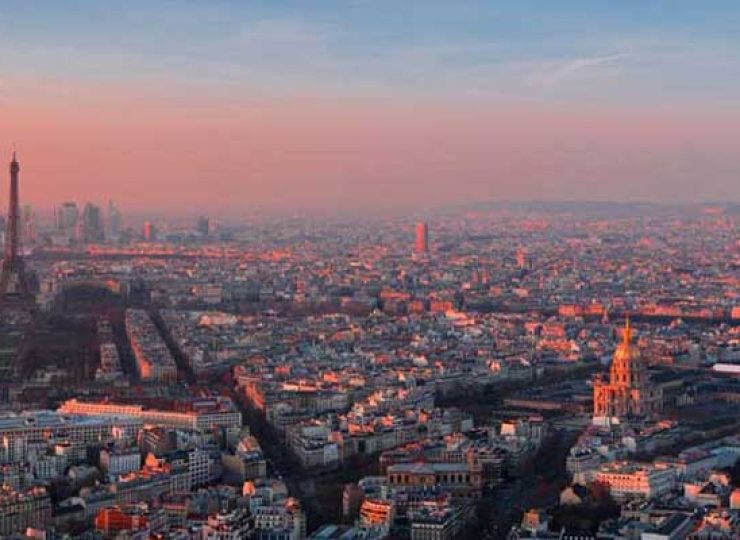Best Holiday Destinations in Spain Travel Guide, Vacation Planning Tips for Spain and Travel Advice
Spain – the country of the Mediterranean, the Atlantic, mountains, sun and beaches. All that sounds like relaxation and healthy lifestyle and that represents the country of Spain. With an area of almost 500,000 km2, the country on the Iberian peninsula is larger than Germany, but with around 45 million inhabitants it has only around half the population.
Due to the year-round high temperatures in some regions, the country is a popular travel destination not only for Europeans. First and foremost it is famous for its many beaches and holiday resorts. More highlights have recently come into focus. Cultural and art-historical routes are being pursued more and more, such as the Way of St. James or Gaudí architecture in Barcelona. In every nook and cranny you can feel a relaxed way of life. Above all, regions like Andalusia or the many archipelagos in Spain invite you to dream and relax on vacation. Spectacular buildings and ruins of ancient cultures line many old town centers in the Spanish provinces. But modernity has also found its way into the country. The cities of Barcelona and Madrid present themselves in a new guise of modern lifestyle and buildings. To help you plan and enjoy the best holiday destinations in Spain vacation, we’ve put together the most important information here.
Playa de la Misericordia, Malaga
Facts and Figures About the Holiday Destination Spain
- Area: 505,990 km2
- Population: around 47,42 million (2021)
- National language: Spanish (Castellano), in autonomous regions Galician, Aranese, Basque, Catalan
- Population density: 91 inhabitants/km2
- Capital: Madrid (3.234 million (2012) million inhabitants/ 606 km2)
- License plate: E
- International dialing code: 0034 or +34
- Emergency call: 112, 085 (fire brigade), 062 (Guardia Civil)
- Form of government: parliamentary monarchy
- Head of State: King Juan Carlos I
- Head of Government: Prime Minister José Luis Zapatero
- National holiday: October 12 Currency: Euro
- Time zones: UTC +1 CET; UTC+2 CEST (between March and October); UTC (Canary Islands); UTC +1 (Canary Islands: between March and October)
- Religions: Roman Catholic (c.92%)
- Administration of the country: 17 autonomous communities, 52 provinces
Metropol Parasol, Plaza de la Encarnación, Seville
The History of the Holiday Destination Spain
- 1200 – 1000 BC Iberians mingle with the invading Celts; Phoenicians form the first colonies in the south, such as today’s Cadiz (then Gadir)
- 1000-700 BC Phoenicians form Mediterranean trade routes; Greeks invade Spain
- Approx. 600 BC During the Punic Wars between Rome and Carthage, the Carthaginians expelled the Greeks and established important colonies in Carthagena (new Carthage) and Ibiza
- Approx. 200 AD After Cathargo’s defeat by Rome, Rome conquers the Spanish provinces. Many Roman buildings such as the Colosseum and today’s language bear witness to this time.
- Around AD 400 First tendencies towards decline in the Roman Empire; The Goths conquer Spain
- 8th-15th centuries The Muslims invade Spain and bring progress to the country
- 15th century Reconquista (Reconquest) by the Catholic Monarchs and the Spanish Inquisition
1492 Christopher Columbus discovers America and Spain’s wealth - 16th century Creation of colonies in South America; wars in mainland Europe; Spain becomes a sea power
- 17th/18th Century War of Spanish Succession; End of the Habsburg dynasty
- 19th century Napoleon briefly conquers Spain
- 1936 Spanish Civil War; Franco forms military dictatorship
- 1975 Death of Franco and creation of democracy in the country
- 1986 accession to the EU
Arc De Triomphe, Barcelona
Discover the Top Holiday Destinations in Spain’s Major Provinces and Territories on Your Spain Vacation
Andalusia: One of the Best Holiday Destinations in Spain for Sun, Traditions, and Relaxed Lifestyle
Those who want to visit the best holiday destinations in Spain are typically drawn to Andalusia. Friendly people, a relaxed lifestyle, old Spanish traditions such as flamenco or bullfighting and lots of sun – that’s what the southernmost of all autonomous regions stands for. The most populous and second largest region in Spain in terms of area is the tourist magnet on the Iberian Peninsula. No wonder with more than 3000 hours of sunshine a year and hardly any rain. The many beaches in Andalusia, such as the Costa del Sol, invite you to enjoy an excellent bathing experience during your holiday in Spain. Andalusia is a paradise for water sports enthusiasts. Cadiz is one of the best places for windsurfing. But other outdoor activities are also becoming increasingly popular. Only a few minutes away from the Costa del Sol is the Sierra Nevada, where you can practice winter sports after swimming. Various natural areas with changing flora and fauna contradict the prejudice of the desert region of Andalusia. There are 22 different national parks alone that show the different environments in the south of the Iberian Peninsula. In addition to the Alhambra in Granada, the Mezquita in Córdoba, the city of Cadiz, the capital Seville, the Sierra Nevada and the Costa de la Luz, these are absolute highlights. Walks through white Andalusian cities like Granada will take you to a dream.
Aragon Travel Information for Your Spain Vacation: The Spain Travel Guide to This Rural Region in the North-East
The autonomous region of Aragon is located south of the Pyrenees in the Ebro river basin. The region in the north-east of Spain is very rural. The capital Zaragoza is by far the largest city and the economic and urban center of the region. Aragon impresses with its scenic and natural divergence. In the snowy hills of the Pyrenees, at more than 3000m altitude, you will find winter sports tourism and a few meters below, targeted agriculture with culinary products such as Pyrenean wine and various cheeses. In addition to the spectacular mountain lakes and nature parks, you will find special animal species such as marmots and bears. From the mountains you have a wonderful view of the deep and extensive Ebro valley. Further south begins the Iberian mountain range. The appeal of the region for a holiday in Spain is made up of the many small towns. Barbastro and Utebo are definitely worth a visit. With the many Gothic church buildings, Aragon shows the important position in medieval-Christian Spain of the first Catholic king, Ferdinand of Aragon. The medieval crafts and folklore, which are expressed in various festivals such as the “Fiestas del Pilar” or the “Fiesta de la Fruta”, are stylistic for the region.
Asturias Travel Information for Your Spain Vacation: The Ultimate Spain Travel Guide
The autonomous region of Asturias is located on the Bay of Biscay in northwestern Spain. The region with the capital Oviedo is known for its spectacular coastline, lush vegetation and many mountain ranges. Next to Galicia, which borders to the west, Asturias is known as “green Spain”. Located in the Cantabrian Mountains, you will find animal species such as wolves and bears and eucalyptus and pine forests. With the Picos de Europa, Asturias has one of the most beautiful national parks in Spain. If you are on holiday in Spain, you will find both beautiful sandy beaches and wild coves on the Costa Verde. Traces of cave paintings have been found in various caves in Asturias, which testify that people lived in the present area around 15,000 years ago. The caves and the Picos de Europa National Park are well worth seeing to capture the natural beauty of Asturias. But the church of San Julian de los Prados in Oviedo, which has been declared a UNESCO World Heritage Site, is also an absolute eye-catcher. Protected by the mountains, Asturias was one of the few Gothic fortresses in Moorish Spain. The reconquest by the Catholic Monarchs started from Asturias.
Picos de Europa, Spain
Balearic Islands: Sunny Beaches, Vibrant Nightlife, and 300 Days of Sunshine – One of the Best Holiday Destinations in Spain You Can’t Miss
The popular Balearic island of Mallorca is just one of many islands in the Balearic Islands. The archipelago is one of the best holiday destinations in Spain and has a total of 151 islands. Of course, many of them have vanishingly small areas. The best known are Mallorca, Ibiza, Formentera and Menorca. Altogether the Balearic Islands have around one million inhabitants. Due to the many tourists, there are many more people. The capital of the autonomous region of the Balearic Islands is Palma de Mallorca with around 400,000 inhabitants. From there you can explore the largest of the Balearic Islands, which has much more to offer for a Spain holiday than just the ballerina. Numerous shopping, sports and recreational opportunities can be found here. It’s worth flying to Ibiza to celebrate. Here you will find some of the most vibrant nightlife in the entire Mediterranean. In Formentera it is still a bit dignified. Here you will find beautiful sandy beaches that are not too crowded. While in Menorca long walks are worthwhile to admire the beautiful nature. Temperatures in winter average a warm 14 degrees and in summer it averages 29 degrees. The water temperature can reach 20 degrees in summer. The Balearic Islands have around 300 days of sunshine a year.
Basque Travel Information for Your Spain Vacation: The Ultimate Spain Travel Guide
According to the tribal researchers, the Basques must have fallen from the sky. To this day it is unclear where the Basques and their language come from. Basque is not related to any other language. Don’t worry, that’s not an obstacle for a holiday in Spain: Luckily, people in the autonomous region of the Basque Country also speak Spanish. In the north of the country between the Bay of Biscay and the Pyrenees, the Basques keep their traditions alive. They have their own sports and only Basques are allowed to play in the famous football club Athletic Bilbao. ETA’s violent independence movement finds little support among the Basque population. The conflict with the Spanish central government has been dormant for the last few years and there is no danger there. The Basque Country shows its prosperity above all in its 3 big cities: Bilbao, San Sebastian and the capital Vitoria-Gasteiz. Bilbao is a modern and high-tech business location with perhaps the greatest tourist attraction in the Basque Country. The Guggenheim Museum offers a fascinating interplay of elements and should definitely be visited during your holiday in Spain. With its beautiful beach bays and magnificent houses, San Sebastian makes a stately and sublime impression. Vitoria enchants with its interplay of the medieval old town and the modern government quarters.
Galicia Travel Information for Your Spain Vacation: The Ultimate Spain Travel Guide to Spain’s Green and Fertile Region with a Mild Atlantic Climate
It feels like being in Ireland when you drive through the green hills of Galicia in Spain. The country is green and fertile due to the mild Atlantic climate and the large amount of precipitation throughout the year. The autonomous region of Galicia is located in the northwestern tip of the Iberian Peninsula. The beautiful landscape invites to many hiking tours, for example through the many mountains that rise behind the city of Lugo. Or one should make a detour to the Islas Cies, which lie in front of the city of Vigo and represent a wonderful work of art of nature. City trips to the cities of La Coruña or Pontevedra are also highly recommended, as the old town centers are highly recommended. The highlight of Galician city tourism is the capital Santiago de Compostela. The tomb of the apostle James was found here and the cathedral has been the destination of the famous Way of St. James since the 8th century. The old town has been declared a UNESCO World Heritage Site. If you are traveling in Galicia, you should definitely try the Galician cuisine, which is highly praised by the Spaniards. Seafood or octopus with olive oil and one of the many local wines is served in the numerous tapas bars.
Canary Islands: A Unique Blend of North Africa, Latin America, and Spain – Great Locations for Hiking and Swimming, and One of the Best Holiday Destinations in Spain You Can’t Miss
Geographically they belong to Africa, culturally they have something of Latin America, but politically the Canary Islands belong to Spain. The islands are one of the best holiday destinations in Spain, which are very popular with tourists, can be found west of the coast of Morocco. The archipelago are one of the best holiday destinations in Spain and consists of the seven large islands of Gran Canaria, Tenerife, Lanzarote, Fuerteventura, La Palma, Gomera and Hierro and several small ones. Due to the volcanic origin, the archipelago often has a crater-shaped relief. Many steep coastal craters enclose the numerous sandy beaches. The highest mountain in Spain is the Teide on Tenerife at 3720 meters. Around the summit is the nature park of the same name. In addition to it, there are numerous other nature parks that invite you to hike on these exciting islands. The island of Gran Canaria is recommended for bathing enthusiasts who spend their holidays in Spain here. However, you should drive from the capital Las Palmas in the north to the very popular beaches in the south, as it is more cloudy in the north. In general, the following applies to a holiday in Spain in this area: the islands in the east are more suitable for swimming and those in the west are more suitable for hiking. The temperatures almost never fall below 15 degrees a year, it is summery warm all year round.
Cantabria Travel Information for Your Spain Vacation: Explore 6 Nature Parks, Mountain Ranges, Forests, and the Sea in This Region – The Ultimate Spain Travel Guide
In the north of the country between the Basque Country and Asturias is the small but beautiful autonomous region of Cantabria. Just 600,000 people live in this area on the Bay of Biscay. The landscape is characterized by the beautiful mountain ranges, its forests and the sea. The mountains are home to the Picos de Europa Natural Park, which extends westward into the Asturias region. Similar to Asturias, Cantabria also has a similarly lush vegetation. Therefore, there are also a total of 6 nature parks and a national park in the 5300 square km region. The local cuisine consists mainly of meat and fish dishes and various stews. The image of the region is very rural. Many picturesque villages line up between the mountain and coastal regions. The capital, Santander, accounts for a third of Cantabria’s total population. In the Bay of Santander you will find beautiful beaches and a dreamlike beach promenade under palm trees. Here it is worth taking a holiday home for the summer and switching off instead of a “traditional” Spain holiday. It doesn’t get boring in summer: Santander’s summer university attracts numerous students from all over the world every year, making the city center a vibrant place.
Castile-León Travel Information for Your Spain Vacation: The Ultimate Spain Travel Guide
Castile-Leon with the capital Valladolid is the largest autonomous region in Spain. If you look at its landscape, you can understand why Spain is considered the most mountainous country in Europe after Switzerland. Numerous plateaus, deep gorges and massive mountain ranges characterize the image of the region, which extends over a large part of the northern Iberian half. This relief structure makes Castile-León a real treat for outdoor enthusiasts. This region is ideal for climbers, hikers, cyclists and even paragliders. Glacial lakes adorn the mountaintops and invite canoeists to get active on their holidays in Spain. Sheep graze in the partially steppe-like valleys on the Duero river and mainly grain is grown. Many castles and palaces adorn the landscape. Inside there are also often guest houses, so that royal living is possible for everyone. For many centuries, the region of Castile and León was of great political and ecclesiastical importance. The many important church buildings and pilgrimage routes bear witness to this. The Via de la Plata (Silver Way) and the famous Way of St. James lead through the provinces of León, Burgos and Palencia. The continental climate means hot summers, but also very cold winters.
Catalonia: Where Ancient Tourist Attractions Meet Modern Standards: A Top Choice Among the Best Holiday Destinations in Spain
In the northeasternmost autonomous region of Catalonia, ancient tourist attractions meet modern standards. Catalonia is one of the best holiday destinations in Spain – basically you can do mountain tours in the Pyrenees, soak up the sun and do water sports on the Costa Brava or take a cultural trip to the capital Barcelona. What makes the region so special is its prosperity. It is the strongest industrial region in Spain and almost half of all residents work in the industrial sector. Nevertheless, the region has retained its rural charm. The quiet small town of Tarragona with its numerous Roman ruins and beautiful old town is a romantic spot. And the provinces continue to be used for agriculture, such as the cultivation of olives or wine. Catalonia speaks its own language, Catalan. This language seems like a mixture of French and Spanish. The regional cuisine impresses with its famous tapas, various rice dishes such as paella and seafood. A city tour to Barcelona is hard to avoid when on holiday in Spain, as this metropolis is a magnet for young people, culture enthusiasts and cosmopolitans. Highlights are the architectural masterpieces of Gaudi, the Barceloneta district, the nightlife, the street mile La Rambla and the numerous shopping opportunities in the pedestrian zones.
Basílica de la Sagrada Família, Barcelona
La Rioja – Foodie`s Paradise: A Top Choice Among the Best Holiday Destinations in Spain
What Bordeaux is for the French and Chianti for the Italians, the autonomous region of La Rioja is the most important growing area for the Spaniards. And that is also expressed in numbers: no other growing region in the world produces as much top-quality wine as La Rioja. Located in the north of the country in the Ebro Basin and south of the Iberian mountain range, the region has only one province and only has 300,000 inhabitants. No wonder that the wine-growing region with 20,000 winegrowers even extends into the neighboring regions of Navarra and the Basque Country. La Rioja wine has 7 variations, 3 of which come from the white grape. One of the most important wine towns in the region is the small town of Haro. Wine is made here, bottles and oak barrels are stored and various wine festivals are celebrated. The most famous is probably the wine battle, where participants dressed in white spray each other with wine at the end of July. The history of wine is also documented in the wine museum. Haro is on the famous Way of Saint James that crosses the La Rioja region. Idyllic, relaxed towns such as the capital Logroño, the UNESCO World Heritage site of San Millan de la Cogolla and Calahorra adorn this already legendary route.
Madrid: The Center of Finance and Culture – A Must-Visit Among the Best Holiday Destinations in Spain
Madrid is one of the best holiday destinations in Spain and the capital city of Spain and, with around 3.2 million inhabitants, has about the same population as Berlin. The metropolis has been the Spanish capital since 1561 and has been the center of finance, politics, communication technology and the economy ever since. The Spanish entity works through this city in the geographic center of the country. In addition to politics, art and culture are very important in Madrid.
For culture vultures vacationing in Spain, the largest city on the Iberian Peninsula has it all. The most famous “temple of art” is the world-famous Prado Museum, but the Reina Sofia and Thyssen-Bornemisza museums, just a few meters away, are also known all over the world. The historic center around the medieval buildings of the Habsburg dynasty should be visited during your holiday in Spain, as should the “art mile”, where various green spaces meet castles and cultural institutions. Here you should see the magnificent buildings of the Spanish Bank and the Palace of Telecommunications. The city is considered one of the greenest in all of Europe. Madrid is also a nightlife city. Many cafes, discotheques and bars are open all night here. Located on a plateau, Madrid has hot summers and very cold winters.
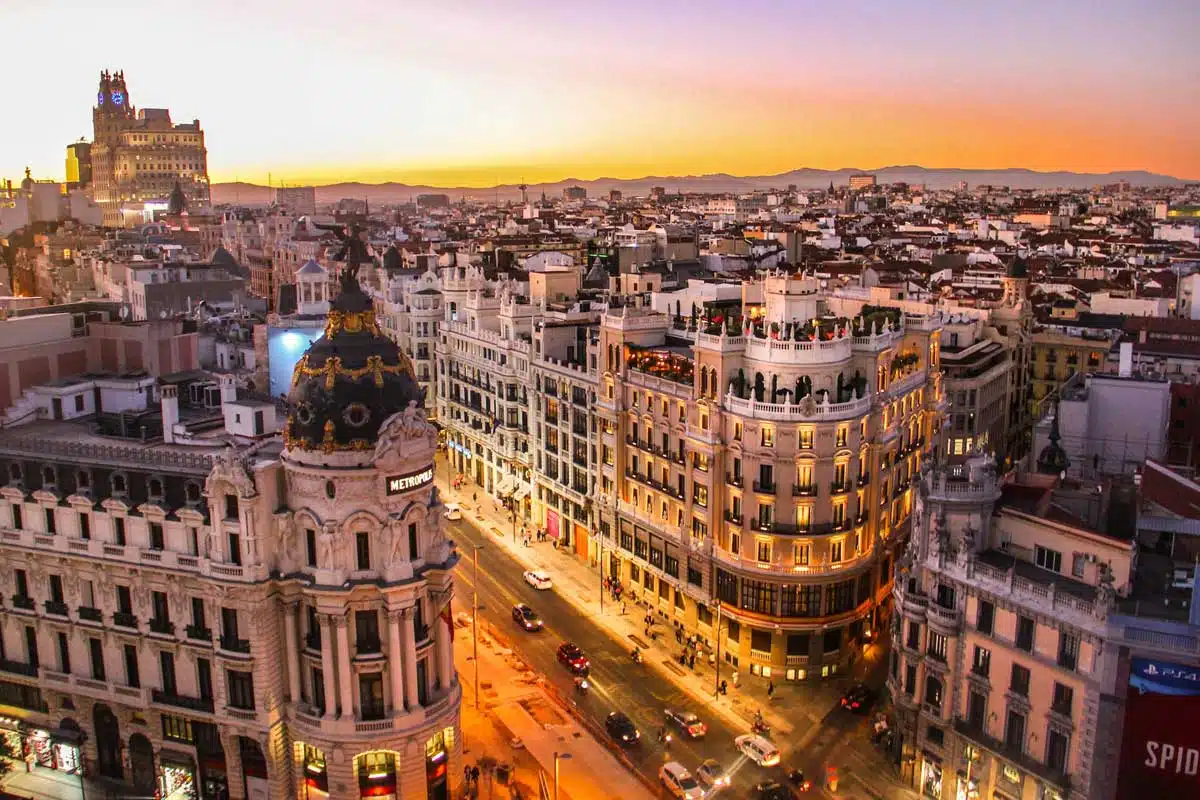 Calle Gran Vía, Madrid
Calle Gran Vía, Madrid
Murcia Travel Information for Your Spain Vacation: The Ultimate Spain Travel Guide
Located in the south-east of Spain, the autonomous region of Murcia is one of the most popular and best holiday destinations in Spain. No wonder with very few rainy days and an annual average temperature of 18 degrees. The summers can reach very high temperatures, so cooling down is urgently needed. The Mediterranean can offer this with more than 200 beaches in the region. One of the most popular beaches for tourists is the Costa Cálida, which lies on the La Manga sandbank. This sandbar separates part of the sea water from the Mediterranean Sea, creating a spectacular lagoon: The Mar Menor. This saltwater lake is a pleasure to swim in with water temperatures that are 5 degrees higher than in the Mediterranean Sea. With the high temperatures and severe drought, it is not surprising that the region is in a desert and the rivers are short and water-poor. However, further inland in the region one encounters dense forests in the central mountain ranges. The region was already an important trading center in ancient times. The Greeks and Carthaginians settled here and made Murcia the center of Mediterranean trade. The Mediterranean city of Cartagena still bears the name of the Carthaginians in its name.
Navarre Travel Information for Your Spain Vacation: The Ultimate Spain Travel Guide
Navarre, once a kingdom in the years 905-1512, is located in northern Spain in the western Pyrenees range and extends into the Ebro Valley. After the war between France and Argonia in 1512, Navarre was divided into two parts, the southern part of which has been officially an autonomous region of Spain since 1982. With 600,000 inhabitants, it is one of the most sparsely populated regions, but has achieved a high level of prosperity through the settlement of industry. Historically and culturally, the region largely belongs to the Basque Country. Basque is still officially spoken in many towns and villages and various Basque traditions are also maintained here. 50 different nature parks show the natural diversity of the region: A paradise for hikers, anglers and outdoor fans on Spain holidays. The wine is also first class. From the neighboring region of La Rioja, the wine-growing areas extend across the borders to Navarre. Cabernet Sauvignon and Trempanillo are made here. In addition, the famous Way of St. James leads through Navarre. One stop is the capital, Pamplona. Hemingway made the city and the traditions surrounding the San Fermine fair world famous. The famous bull run does not end happily for every participant. There are many injuries every year in this spectacle.
Valencia: A Top Choice Among the Best Holiday Destinations in Spain
The Region of Valencia is one of the most visited holiday areas and best holiday destinations in Spain. The autonomous region in the east of the country is a popular place for the recreation industry. Many “health facilities” around the rich offer of golf, tennis and horseback riding make a trip to the Mediterranean coast a pleasant experience. You can also practice extreme sports with lots of water sports and outdoor activities. The region is divided into the interior, which is mainly characterized by the many mountains of the Iberian mountain range and the Betic Cordillera. Furthermore, the coastal sections with flat sandy beaches characterize a Mediterranean-idyllic beach picture.
Low rainfall and high temperatures in summer and mild weather in winter make the region a popular year-round destination for a holiday in Spain. The official language alongside Spanish is Valenciano, which is a form of Catalan. Many festivals are celebrated in the region. Some of these commemorate the wars between the Moors and Christians. In addition, the Fallas in the capital Valencia are very famous. Travelers to Valencia should definitely try the paella, which comes from the region and is Spain’s most famous culinary product. You should also visit the city of Alicante and its archaeological museum.
Extremadura Travel Information for Your Spain Vacation: The Ultimate Spain Travel Guide
The southwestern region of Extremadura is one of the poorest and most provincial regions of Spain. However, the region is one of the richest in natural and artistic resources. Not far from the tourist-crowded beaches of southern Andalusia you will find the still somewhat unexplored classic Spain. Tradition is still very important here. Classical costumes are still worn here, the production of handicrafts is cultivated and their own wine is grown. You should taste both during a holiday in Spain. Cheese, trout and charcuterie should be eaten with a wine from the region. The region consists of mountain ranges and the fertile land between the Tajo and Guadiana rivers. Many nature parks are located in this area. In the cities of Caceres and the capital Mérida you feel like you are in an open-air museum. Ancient Roman buildings adorn the old town in Mérida and Moorish buildings in Caceres and have made the two cities UNESCO World Heritage Sites. Mérida was an important city for the Romans and Extremadura later an important border region between Christians and Moors. In addition, Extremadura is called the land of conquerors because many well-known Spanish seafarers and conquerors such as Pizarro or Cortes were born here.
Castile–La Mancha Travel Information for Your Spain Vacation: The Ultimate Spain Travel Guide
The Autonomous Region of Castile-La Mancha is located in the Castilian countryside and is governed by the Spaniards often called New Castile. The region was once combined with the province of Madrid under this term. However, due to the different levels of economic output, the somewhat poorer region was separated from the capital region. Castile-La Mancha, which is the geographic center of Spain occupies can be divided into two structurally distinct regions. First, there is the Meseta, which is a long-running plain. Furthermore, one encounters the high mountain ranges of the Castilian mountain range, the Iberian mountain range and the Sierra Morena. The entire region is crossed by many important rivers. Throughout history, the region has been an important crossroads with other regions and the scene of many battles between Arabs and Christians. Here, through the marriage of Isabell and Ferdinand, the regions of Aragon and Castile were united and the Catholic Kingdom was born. The action of the famous novel Don Quixote takes place in Castile-La Mancha. The white windmills, which are often mentioned in the novel, are still symbols of Castile today. The capital, Toledo, is bursting with sights and, along with the small town of Cuenca, is a UNESCO World Heritage Site.
Ceuta Travel Information for Your Spain Vacation: The Ultimate Spain Travel Guide to the Fortified Spanish Enclave on the African Continent
The autonomous Spanish enclave of Ceuta is a fortified city. Located on the African continent on the eastern side of the Strait of Gibraltar, the city has always played important strategic roles. 76,000 people live in Ceuta, where Andalusian lifestyle meets North African mobility. The streetscape is a mixture of Arabic and Christian elements. Various ethnic groups and cultures once lived here: Carthaginians, Greeks, Romans and Muslims can be found on an area of around 20 square kilometers. The city got its name from the Latin word “sebta”, which derives from the term “septem fratres” (seven brothers). In Roman times the city was settled by the Carthaginians and up to the 15th century it was inhabited by Arab tribes. In 1415 it was conquered by the Portuguese and from 1580 it was declared an enclave by the Spanish crown. The center around the Plaza de África is surrounded by the historic city walls. The church of Nuestra Señora de Africa, built on the site of a mosque, is considered the main attraction of the city, along with the baroque cathedral of Santa Maria de la Asuncion. A memorial stone of the dictator Franco can also be found here.
Melilla Travel Information for Your Spain Vacation: The Ultimate Spain Travel Guide to the Autonomous Spanish City in Morocco
Along with Ceuta, Melilla is another autonomous Spanish city on the political territory in Morocco. Although it is on the African continent, the city of 65,000 is almost exclusively Spanish, but you can also find Muslims, Jews and other faiths here. Located on the Guelaia peninsula, the city of Melilla, in the province of Málaga, gives the impression of being in Andalusia. Small alleys, wide squares, orange squares and relaxed life are reminiscent of southern Spain. Like Ceuta, Melilla was first founded by the Phoenicians, inhabited by the Carthaginians and conquered by the Romans. It was then destroyed by the Arabs in the 8th century and later rebuilt. It was then conquered by the Spanish at the end of the 15th century. Like Ceuta, the city has been the subject of a dispute between Morocco and Spain for many years. The main source of income is fishing, processing and shipbuilding. However, the city is finding it difficult to finance itself. It is dependent on the financial support of the EU and Spain. The city is surrounded by a large wall and was therefore always protected from attackers.
Top Places to Visit in the Best Holiday Destinations in Spain
Depending on the target group, a holiday in Spain offers something worth seeing in different areas. In terms of culture, a city trip to Barcelona is highly recommended. There you should definitely visit Gaudi’s buildings, such as Park Güell or the Sagrada Familia church. The Picasso Museum, Barcelona’s most visited museum, is also worth a visit. Overall, there are many interesting museums in Spain. For example, the Guggenheim Museum in Bilbao is not only an absolute eye-catcher from the outside, and the Flamenco Dance Museum in Seville shows the history of what is probably the country’s most famous dance. Architecturally, a holiday in Spain has an incredible amount to offer. The Mosque in Córdoba and the Alhambra in Granada are spectacular testimonies to Moorish rule. The Cathedral of Santiago de Compostela as the destination of the Way of St. James is a special place for followers of the Christian faith and absolutely worth seeing. The cathedral and the old town around it have been declared a World Heritage Site by UNESCO. Otherwise, almost every city in Spain has preserved its historic old town. When visiting the best holiday destinations in Spain, it is always advisable to walk through the narrow streets and squares and soak up the Spanish attitude to life in the tapas restaurant.
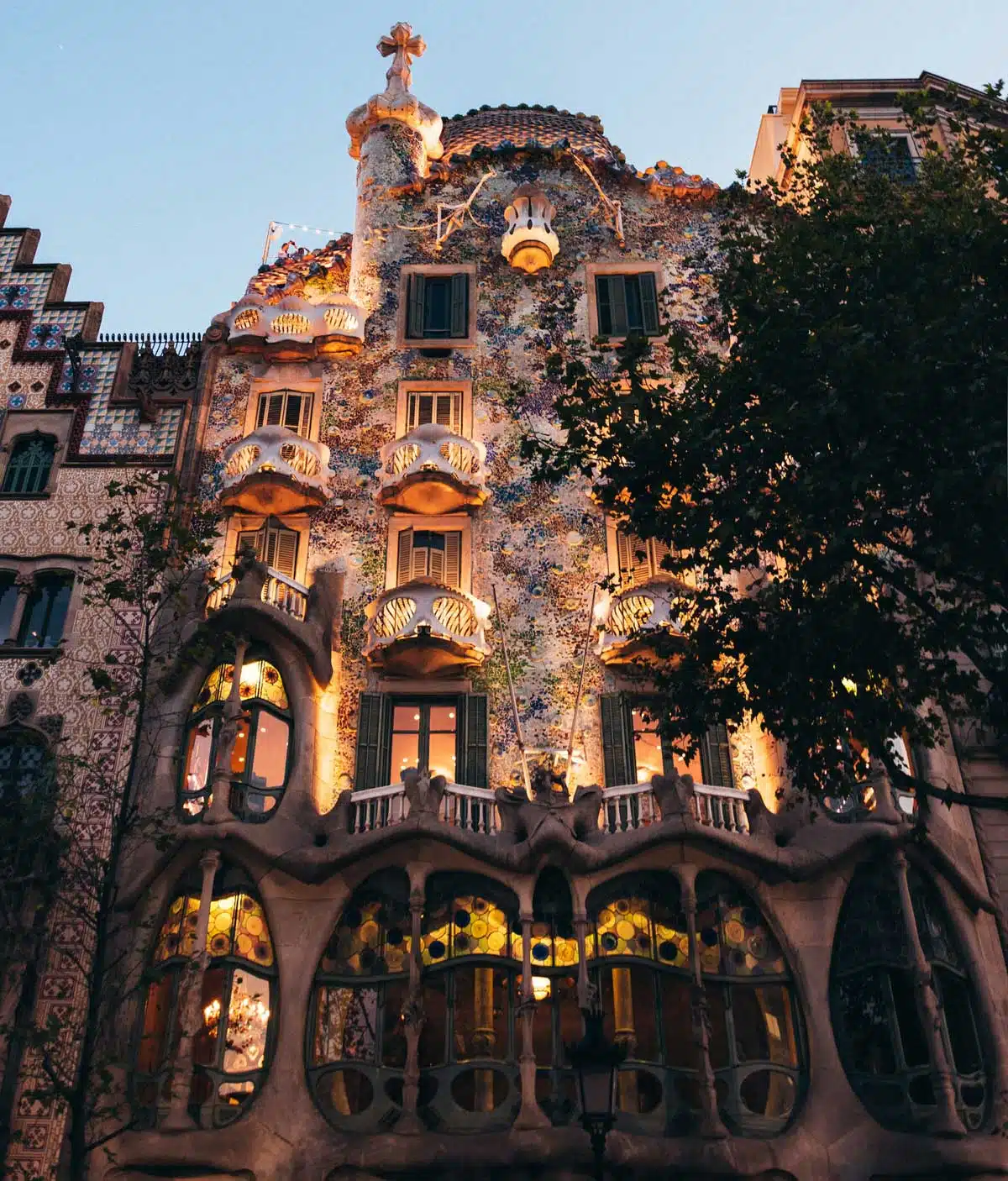 Casa Batlló von Gaudí, Barcelona
Casa Batlló von Gaudí, Barcelona
Top National Parks in the Best Holiday Destinations in Spain
The national parks are of course an important part of a holiday in Spain. The country of Spain has 14 national parks. There are 4 national parks on the Canary Islands alone. One national park is on the Balearic island of Cabrera and one on the Atlantic islands off the coast of Galicia. Eight national parks are located on the Iberian Peninsula. They differ in flora and fauna, climate zone and altitude. The Picos de Europa in the north of the country, the Sierra Nevada in the southeast and the national parks of Ordesa and the Aigüestortes i Estany de Sant Maurici in the Pyrenees are ecological systems located on mountain ranges. The Andalusian Doñana National Park has become a warm haven for migratory birds and boasts diverse ecosystems. In the very humid area of Tablas de Daimiel there are many different species of birds. Another national park will soon be added. The Guadarrama Park is located in the Iberian mountain range. Together with it, the area of all national parks occupies about 1,300 km2.
 Aiako Harria Parke Naturala, Oiarzun
Aiako Harria Parke Naturala, Oiarzun
Discover the Best Holiday Destinations in Spain’s Major Cities on Your Spain Vacation
Alicante: One of the Best Holiday Destinations in Spain You Can’t Miss
The city of Alicante in eastern Spain is one of the best holiday destinations in Spain and has the second largest port on the Costa Blanca after Valencia. Many sunny days guarantee a pleasant stay on one of the most popular beaches on the Iberian Peninsula. The long palm promenade “Explanada de España”, which runs along the coast, invites you to take a long walk. Not far from there are some boutiques where you can go shopping while on holiday in Spain. Overall, the city looks very clean and geared towards tourism with a feel-good character. Many hotels, clean beaches and a wide range of leisure activities, such as golfing on the numerous golf courses, are real magnets for visitors. The wine from Alicante became famous, the different grape varieties of which are cultivated on the coast and also a few kilometers inland. In addition to the typical Spanish grape varieties, you will also find wines from the “globetrotter” Cabernet Sauvignon. From the “Castillo de Santa Bárbara”, a castle on a hill, which is said to have been built by the Catharians, you have a wonderful view over the city and coast. This is the city’s most visited attraction and a must-see during your Spain vacation.
Bilbao: A Must-Visit Among the Best Holiday Destinations in Spain
As the metropolis of the Spanish Basque Country, Bilbao is the most important northern Spanish port city. It is the capital of Biscay and is located on the Gulf of the same name. Bilbao is mainly industrial and has developed its prosperity as a result. A few magnificent houses from the 19th century tell of the economic success of this era. Nevertheless, the city’s reputation as a gray mouse lingered on for a long time. This prompted the city to undergo a modern cure in the 1990s. A metro was built that star architect Foster helped design. In addition, the world-famous Guggenheim Museum was built in 1997 and has served as Bilbao’s landmark ever since. The spectacular architecture with the integration of the adjacent river, building, highway, bridge and the mixture of titanium, limestone and glass makes it a surreal and colorful world. The whole area around the museum with its sculptures, playgrounds and parks is definitely worth a visit. Other examples of a modern Bilbao are the modern Calatrava Airport, the Euskalduna Congress Palace, the modern road network and the architectural projects of local visionaries Arata Isozaki and Cesar Pelli. Those who spend their holidays in Spain here will find classic, sophisticated architecture at the Gothic cathedral in the old town near the town hall.
Barcelona: A Seaside City of Culture, Art, Music, Fashion, and Nightlife – One of the Best Holiday Destinations in Spain You Can’t Miss
Most holidaymakers in Spain are interested in Spain’s most visited city, the Catalan capital of Barcelona. Few cities in the world are as “cool” and attract the youth of the world as much as this metropolis. In this hip city you will find everything your heart desires. The big advantage to the capital Madrid is the location by the sea. Barcelona is the culture, art, music, youth, fashion and party city of Spain. Barcelona visitors can be found in the old town, in the many parks, in the many museums or theaters, the port, the trendy districts or the Rambla, which is a promenade in the center. The biggest tourist attractions are the buildings of Antoni Gaudí, which are strongly influenced by Barcelona’s Art Nouveau, the “Modernisme”. The church “Sagrada Família” and the “Park Güell” are absolute must-sees. Beaches such as those in Barceloneta, a former fishing district, are ideal for relaxing away from the big city. Surrounded by mountains, you have a wonderful view of the city from there. Built by the Romans, the city is one of the best holiday destinations in Spain and is now a cultural metropolis that creates its own style and attracts millions of people.
Cordoba: A Gateway to the Alhambra in Granada, the Largest Testimony to Moorish Rule on the Iberian Peninsula – One of the Best Holiday Destinations in Spain You Can’t Miss
After Seville and Málaga, Córdoba is the third largest city in Andalusia with just over 300,000 inhabitants and is one of the best holiday destinations in Spain. A very high number of tourists annually visit this city, which has been an important place in history. Cordoba was already the capital of the southern Spanish provinces under Roman rule. In the 10th century, the city gained fame in the Arab world as the local patron Abd-Ar-Rahman III. proclaimed himself caliph. The greatest testimony of this time is the “Mezquita”. It is considered one of the most important sights in Spain and, alongside the Alhambra in Granada, the largest testimony to Moorish rule on the Iberian Peninsula. The mosque has been frequently remodeled and altered due to political changes and reconquests. The huge landscape of columns with the well-known double arches inside the mosque was often expanded and two chapels were placed inside the mosque after the Reconquista. Therefore, Islamic and Roman Catholic elements meet within the mosque and therefore make it a special religious meeting place, which is hard to imagine on a holiday in Spain.
Granada: One of the Best Holiday Destinations in Spain You Can’t Miss, Offering Scenic Hiking Routes and Thrilling Ski Slopes
With its southern Spanish flair, the city offers a wonderful opportunity to switch off and let yourself glide through the narrow streets and street districts. The Albaicín Quarter, built by the Moors, is one of those dreamy areas and is well worth a visit. The main attraction, however, is the Alhambra built on a hill above the city. Built by the Moors, this palace is considered the most beautiful Arabic structure to be found in Europe. Granada is one of the most visited holiday destinations in the world. In addition to the high relaxation factor in the Mediterranean climate, the Sierra Nevada is not far from the city. Here you can find snow-covered hills in the middle of southern Europe during your Spain holiday. The mountains are well developed with many roads and invite you to one of the well-known hiking routes. At 2000-3000m altitude there are many ski slopes that attract many winter sports enthusiasts not far from the Mediterranean Sea. Culture meets outdoor sports in Granada.
Alhambra
Logrono
The capital of the autonomous community of La Rioja is a city of wine and winemakers. A lot of wine is grown in the region. The wine from the La Rioja region is well-known among wine lovers across national borders. A wine festival is held in Logroño in the penultimate week of September. At this celebration, the grapes are publicly crushed with the feet after the harvest. It is best to enjoy this good wine from the region in one of the many tapa bars on Calle del Laurel, which should definitely be visited. The city on the banks of the Ebro not far from the Basque Country is also an important stop on the Way of St. James to Santiago de Compostela. In addition, Logroño is a university town with around 5,000 students. The colorful and lively old town has a number of sights to offer. The Iglesia de Santa María de Palacio has been able to preserve an almost 50m high tower from a former palace ruin on the banks of the Ebro. The Cathedral de la Redonda, with its numerous chapels inside, offers a wonderful baroque presentation.
Madrid: The Spanish Capital, Nightlife, and Culture – A Seaside City of Art, Music, Fashion, and one of the Greenest in Europe
Madrid is the capital of Spain and, with around 3.2 million inhabitants, has about the same population as Berlin. The metropolis has been the Spanish capital since 1561 and has been the center of finance, politics, communication technology and the economy ever since. The Spanish entity works through this city in the geographic center of the country. In addition to politics, art and culture are very important in Madrid.
The largest city on the Iberian Peninsula has everything to offer for culture enthusiasts on holiday in Spain. The most famous “temple of art” is the world-famous Prado Museum, but the Reina Sofia and Thyssen-Bornemisza museums, just a few meters away, are also known all over the world. The historical center around the medieval buildings of the Habsburg dynasty should be visited as well as the “art mile”, where various green spaces meet castles and cultural institutions. Here you should see the magnificent buildings of the Spanish Bank and the Palace of Telecommunications. The city is one of the best holiday destinations in Spain and considered one of the greenest in all of Europe. Madrid is also a nightlife city. Many cafes, discotheques and bars are open all night here. Located on a plateau, Madrid has hot summers and very cold winters.
Palacio Real (Royal Palace of Madrid)
Málaga: One of the Best Holiday Destinations in Spain You Can’t Miss
Raised into a city by the Romans, prospered by the Moors and reconquered by the Catholic Monarchs of the Reconquista, the city of Malaga has had an exciting history. Even today, the city is on the move. One of the largest Spanish airports handles many visitors every day. The city is considered one of the most visited tourist spots in Spain. Málaga is the second largest city in Andalusia and the largest city on the Costa del Sol, the Sun Coast. The coast owes its name to the many sunny days a year and makes it a very popular holiday resort, where beaches like “Playa de la Malagueta” invite you to swim. But the city also has a lot to offer culturally for a holiday in Spain. A museum with some of his works is dedicated to the probably best-known son of the city of Málaga: Pablo Picasso. To soak up some Spanish culture, visit the Malagueta bullring or sample the region’s signature Muscat wine. Those who want to follow the footsteps of Moorish rule should head to the Alcazaba, a fortress built by the Arabs, which is considered one of the most important monuments in the city of Malaga.
Marbella: The ‘Monaco’ of Spain, Home to Celebrities and Luxury – A Must-Visit Among the Best Holiday Destinations in Spain
Marbella is known as the “Monaco” of Spain. Many celebrities and wealthy people have houses and yachts here. The “Puerto Banús” marina is a symbol of Spanish extravagance. Marbella is one of the best holiday destinations in Spain – the tourist offer with its many golf courses and luxury hotels suggests a somewhat more exclusive clientele. There are also a variety of other sports such as tennis, water sports and horseback riding. The very well developed infrastructure, excellent gastronomy and many varied boutiques make Marbella a real tourist magnet and the highlight of every holiday in Spain. Various shops for luxury goods, clothing and tourism items invite you to stroll around the harbor area. For night owls, the many nightclubs in “Puerto Banús” are recommended, which are open until late at night. Despite modern tourism and the exclusive lifestyle, remains of the old town “Casco Antiguo” of Marbella have been preserved in the center. Here relics from the Moorish culture meet Roman Catholic elements. The orange courtyard invites you to rest and think and the many restaurants sweeten the day on the Costa del Sol.
Merida: One of the Best Holiday Destinations in Spain You Can’t Miss
Roman ruins of old buildings characterize the cityscape of Mérida. Located on the silver road, the Via de la Plata, the amphitheater, the temple for the Roman goddess Diana, the aqueduct and the “Roman Bridge” evoke associations with the Roman Empire. The city was once founded by the Romans under the name of Emerita Augusta and declared the capital of Lusitania. Today the city with 55,000 inhabitants is located in the autonomous region of Extremadura in the southwest of the country. The region is one of the poorest and most provincial regions of holiday destinations in Spain, but that is also part of its charm. Life is very dignified here. In the old town of Mérida you can rest in a café in one of the squares. From there you can catch a glimpse of the Roman buildings that UNESCO has declared a World Heritage Site. If you want to find out more about the Romans and their art, you should go to the Museo nacional de Arte Romano de Mérida. As a refreshment after the cultural program, you should taste the meat, vegetables, various types of cheese, asparagus and white truffle from regional cultivation and cuisine with the typical wine from the region.
The city of Murcia
Murcia is a young city. It was founded by the Moors in the 9th century by Abd-El-Rahman II. In the last century, the population has increased so much that the city in southeastern Spain is one of the ten most populous cities in the country. The province of Murcia lives mainly from agriculture and the export of fruit and peppers. With one of the largest universities in the country, the city of Murcia attracts many students and faculty from all over the world. The greatest attraction is the “Santa María” cathedral in the center of the city, which combines different art epochs in its architecture. A trip to Murcia is worthwhile during Easter week to witness the many processions. Although Murcia is not directly on the coast, a trip to the region is worthwhile, as the many beaches, such as the Costa Calida, and the many hours of sunshine guarantee a wonderful holiday in Spain with bathing fun. The warm Mar Menor Lagoon, which is salty and has access to the sea, is ideal for sightseeing and water sports. A trip to the coastal city of Cartagena, which has many ancient Roman ruins, is also worthwhile.
Mao
Maó, also called Mahón, is the capital of the Balearic island of Menorca. This manageable town, which has less than 30,000 inhabitants, was founded by the Carthaginians. A legend says that the name of the city goes back to the name of Hannibal’s brother. Later the city was occupied by the British until the 18th century and this culture also shaped the architecture and streetscape of the place. What makes the city particularly attractive for a holiday in Spain is the imposing port. It is the second largest natural harbor in the world after Pearl Harbor and has always served as a safe haven for its fleet in the Mediterranean. The port goes up to 5 kilometers inland. The various promenades on the harbor bay invite you to dream and go for a walk. There you will find many boutiques, cafes and restaurants. In the quiet harbor basin there are sailing boats and ferries next to the many yachts. In addition to the city gate “Pont de Sant Roc”, the churches “Santa Maria” and “San Francisco”, the monasteries “Convento de San Francisco” and “Claustro del Carme” and the town hall are absolute eye-catchers in the historic center.
Oviedo: One of the Best Holiday Destinations in Spain You Can’t Miss
The capital of Asturias is also one of the northern cities of the holiday destinations in Spain. Oviedo was founded by the Romans in the 8th century. A century later, in nearby Santiago de Compostela, the tomb of the Apostle James was discovered and the then King Alfonso II of Oviedo became the first pilgrim on the Camino de Santiago. The city is best known today for the “Prince of Asturias Awards” and for its probably most famous son, Fernando Alonso, two-time Formula 1 champion. The entire old town of Oviedo is a car-free pedestrian zone. The Gothic Cathedral of San Salvador, the Church of San Tirso, the Museum of Fine Arts and the Convent of San Vicente are not to be missed. Various pre-Romanesque chapels, the sacred chamber in the cathedral, the Santa Cristina de Lena and the Foncalada fountain have been declared UNESCO World Heritage Sites. If you spend your holiday in Spain in the city with a population of 200,000, you should definitely taste the regional cuisine. Cider is very typical, along with pixin (monkfish), seafood, bean dishes or carne gobernada (meat stew). During a trip to Spain, it is always worth taking a trip to the surrounding area, such as the Costa Verde, where lots of nature and sports activities await you.
Pamplona – The City Near the Pyrenees: Famous for Its Running of the Bulls, Popularized by Ernest Hemingway’s ‘Fiesta’
Ernest Hemingway made Pamplona and its customs world famous with his novel “Fiesta” at the beginning of the 20th century. He also took part in the famous bull race in the old town center and described this spectacular race with its daring participants, who run for their lives from the bulls, as a fascinating tradition. These take place as part of the popular festival “San Fermin”, which has been held since the 16th century and takes place every year from June 6th to 14th. celebrated in July. The “encierro”, as the bull run to the bullring is called, is not only controversial among animal rights activists. In addition to one of the most well-known traditions, the Navarre capital has many other things to offer. The city near the Pyrenees and the Basque Country is also equipped with a renowned university and many shopping opportunities. Sights of a Spain holiday in Pamplona are the spectacular Gothic cathedral with the mausoleum of the Spanish king Charles III. and the citadel with its many green areas and various events. The gardens and parks along the Arga river, the baroque town hall and the medieval city walls that enclose the “Casco Viejo” make a walk a real pleasure. A real highlight on the Way of St. James!
Santander: Known for Its Summer University and International Music and Theater Festivals
The capital of Cantabria, Santander is considered one of the most bourgeois and charming cities of holiday destinations in Spain. It lies along the Cantabrian Bay, where various magnificent houses present themselves. On the very long beach promenade, round palm squares decorate the coastal boulevard. The 200,000-strong city in northern Spain boasts the beautiful El Sardinero beach. In addition, the beaches of the Magdalena Peninsula are highly recommended and the palace of the same name is worth a visit. In 1941 the old town was completely destroyed by a great fire and as a result there are only a few ancient buildings. The city’s cathedral has been rebuilt and the Prehistoric Museum displays UNESCO World Heritage-listed pieces of Stone Age cave art from near Santander. The city was once an important port for trade with America and for fishing. The city is surrounded by mountains and two national parks. Along the bay you will find a large marina and many villas. Santander is now known for its summer university and international music and theater festivals.
Santiago de Compostela: The Final Stop on a Millennium-Old Pilgrimage, Home to the Iconic Cathedral – One of the Best Holiday Destinations in Spain You Can’t Miss
Following in the footsteps of millions of people who have been making pilgrimages from all over the world for more than a thousand years, the Cathedral of Santiago de Compostela is the end of their journey on holiday in Spain. The remains of the apostle James were once found there and were therefore declared a place of pilgrimage from the 9th century. In the Middle Ages, the capital of Galicia was the third most important pilgrimage city for followers of the Catholic faith after Rome and Jerusalem. Despite only having a population of 100,000, the city is very lively and cosmopolitan. This is also the reason why the city in north-west Spain was named a UNESCO World Heritage Site and, in 2000, the European Capital of Culture. The landmark of the city is the spectacular old town with the huge cathedral in the center. On the huge forecourts, day and night, the many pilgrims cavort together with the numerous students from the large Universidad de Compostela.
Zaragoza
Located on the Ebro River rises the fifth largest city of holiday destinations in Spain – Zaragoza. Not far from the French border and from the big cities of Madrid and Barcelona, the capital of Aragon has shone in new splendor since 2008. This year the EXPO was visiting and the city invested in infrastructure and appearance especially for this, so that Zaragoza can pass as a modern metropolis. The landmark of this time is the EXPO bridge and the many promenades along the banks of the Ebro. Alongside the modern guise stands the ancient facade that tells the history of the city. The name Zaragoza came from the former Roman name of the city Colonia Caesaraugusta. The third largest cathedral in Spain is located on the Ebro: the “Basilica de Nuestra Señora de Pilar” and the Aljaferia, a palace from Moorish rule, show the historical sides of the city. The old town in the narrow streets next to the cathedral is busy day and night. Here is one bar next to the other and also many restaurants, so that one can speak of a very lively old town that invites you to spend your Spain vacation here.
Seville, the capital of Andalusia and flamenco: One of the Best Holiday Destinations in Spain You Can’t Miss
With 700,000 inhabitants, the capital of Andalusia is the largest metropolis in southern Spain. Here, big city flair meets Mediterranean lifestyle. Narrow streets and lively squares line the architecturally spectacular old town of Seville. Located on the Guadalquivir River, the city was an important trading and port city in Europe in the 16th and 17th centuries. Even today, some buildings such as the Giralda Tower bear witness to Moorish rule. The minaret, which was extended by a bell tower after the Christian Reconquest, is one of the main attractions of the city, and a visit to it should not be missed on any holiday in Spain. From the top you have a wonderful view over the old town. In addition to the Giralda Tower and the associated cathedral, the Alcázar and Archivo General de Indias have been UNESCO World Heritage Sites since 1987 and are absolutely worth a visit. Capital of Andalusia also means being the capital of flamenco. A museum in Seville is dedicated to this combination of music and dance, the “Museo del Baile Flamenco”.
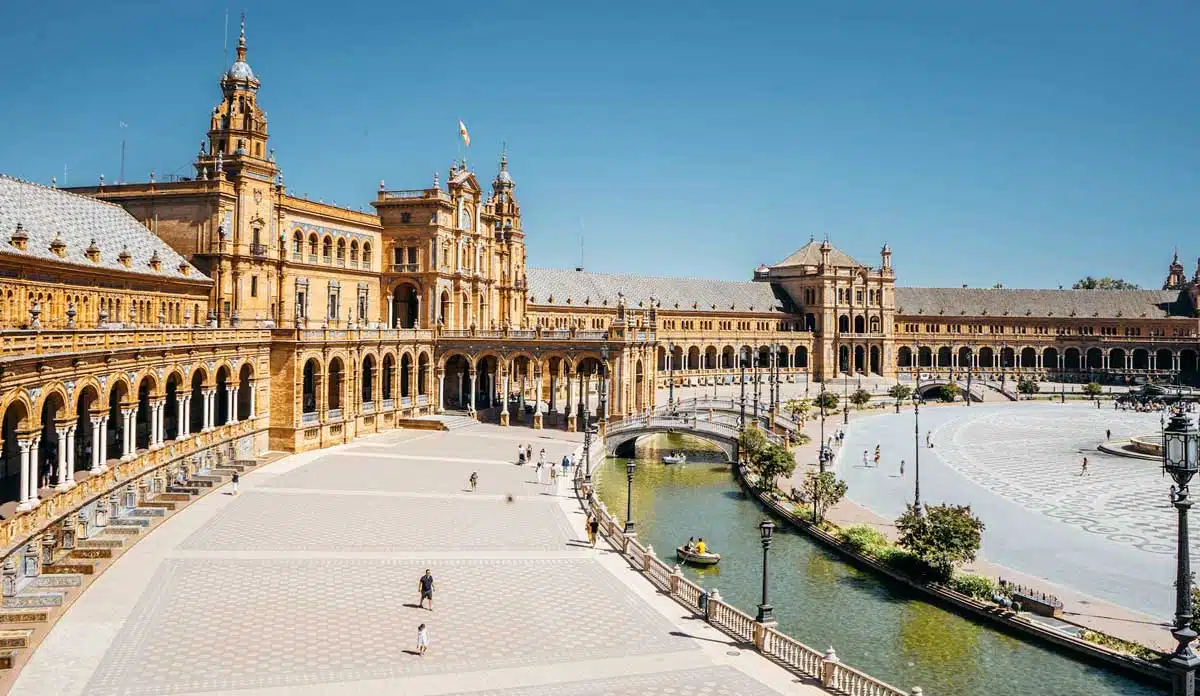
Tarragona
In the south of the autonomous region of Catalonia along the Mediterranean coast is the small, romantic town of Tarragona. Located on the Costa Daurada, not far from Barcelona, it is an important port city. In addition, its center is evidence of sublime Roman architecture. When the city was under Roman rule under the then name “Tarraco”, it was one of the most important Roman settlements on the Mediterranean and capital of the province “Hispania Citerior”. The remnants of this time should not be missed on vacation in Spain. The Colosseum and the Amphitheater still exist from this period and have risen to the ranks of UNESCO World Heritage Sites. There is also an aqueduct, a city wall several kilometers long and the Circ Romà, remains of a Roman chariot racetrack, which are products of Roman architecture. In addition to these spectacular remains of Roman antiquity, the city of Tarragona presents itself today as a romantic spot of Mediterranean lifestyle. You can catch a glimpse of the beautiful strip of sea from almost every angle from the slightly elevated old town core. In the port area and in the narrow streets and squares of the city, you can soak up the lively atmosphere of the city. Those who spend their holidays in Spain will find that the many fish restaurants, which offer seafood and wine from the province, are a culinary highlight.
Toledo: A Medieval City Rich in History and Art, Bursting with Sights Just Southeast of Madrid
Toledo is a city of medieval history. If you walk through the old town, you will see history and art-historical buildings almost everywhere. That’s why it’s a city just bursting with sights. Located southeast of Madrid on the Tajo River is Toledo 192 BC. Founded by the Romans and conquered by the Goths in the 5th century and later declared the capital of their empire. In 711 it was conquered by the Moors and after the reconquest by King AlfonsoVI. it became the capital of Spain until it was moved to Madrid in 1560. The capital of the Castilla-La Mancha region is therefore also called the city of the three cultures today, since Christians, Muslims and Jews lived peacefully together in the city for a long time until the Inquisition. The gothic cathedral and the synagogue de Transito, which was built in the Moorish style, are testaments to this period. The old town with its city wall and its bridges and gates is remarkable. This makes the city indispensable for a holiday in Spain: it looks like an open-air museum and you think you are in the Middle Ages.
Valladolid
The university city of Valladolid, as the capital of the autonomous region of Castilla-León, is about 200 km from the capital Madrid. Due to the many students, the city is always alive and day or night life pulsates in the old town. There you will find many colorful and radiant buildings of the Renaissance on holiday in Spain. For example, the cathedral in the old town is from this art-historical era. Many other churches and palaces date from this period. Valladolid is also an episcopal city and was once the residence of the Catholic Monarchs. Nowadays, several interesting events take place annually. The Holy Week processions are always an event. The cinema week “Seminci” in October invites many film lovers from all over the world to the city on the Pisuerga River. In recent years, the city has been in its economic heyday due to rapid industrialization. Nevertheless, the city was able to retain a medieval flair and knows how to surprise again and again. A walk to the Plaza Mayor with its town hall invites you to dream. Nearby is the gleaming white San Benito Church, which is a real eye-catcher with its open porch.
Valencia: Once Called ‘The Gateway to the Mediterranean’ – A Must-Visit Among the Best Holiday Destinations in Spain
The third largest city in Spain in the east of the country was once called “the gateway to the Mediterranean”. The city still lives from its business acumen and its trade with foreign countries. At that time, rice, silk and olive oil were already being traded, while today fruit and vegetable exports are also flourishing. This activity brought much prosperity to the Valencianos. Today, the city continues to be an important business location. Many trade fairs and congresses take place in the capital of the autonomous region of the same name. Nevertheless, the city has lost none of its cultural appeal. From the old city walls to the remains of the Romanesque forum in the Plaza de la Virgen, you can feel the history of Valencia on every corner. There is also a lot on offer for young people. The nightlife of this metropolis is also known beyond the borders as very pulsating. During the Fallas, a folk festival in March, numerous concerts take place in the Jardines de Viveros. Valencia is also a bathing paradise. The Costa de Azahar and a little further south the Costa Blanca offer spectacular beaches, little wind and lots of sun. After visiting the beach, you should taste the Spanish national dish “Paella valenciana” here on holiday in Spain.
Vitoria
Vitoria, which is the capital of the autonomous region of Basque Country, bears the official name of Vitoria-Gasteiz. Although the Basques are often proud of their own culture and language, the main language spoken in this city is Spanish. The capital of the Àlava region, located on the Zadorra River, has a large number of culturally valuable churches and museums. In addition to the Cathedral of Santa María, which consists of several sub-complexes, which can be found on a hill, the Cathedral of María Inmaculada and the Church of San Miguel in the Plaza de la Virgen Blanca are beautiful monuments of Gothic architecture. The Artium is probably the most famous museum. This Basque museum dedicated to modern art houses a permanent collection. Here you can find everything from ancient religious works to modern works. The exterior architecture alone is an absolute eye-catcher. In addition, the natural science and archaeological museums are very exciting and recommendable. The city of Vitoria pleasantly combines the historic old town with the new town and its many wide and romantic gardens, avenues and government buildings.
Ibiza Town: One of the Best Holiday Destinations in Spain for Relaxation and Vibrant Nightlife
The capital of the island of the same name, Ibiza, is a popular destination for a holiday in Spain and has two faces. By day it is a typically Spanish-Mediterranean place to relax and unwind, while at night it becomes a vibrant, cosmopolitan, internationally renowned party stage. The place has this in common with the party metropolises of the other Balearic Islands, but the party people differ from the Ballermann clientele. The best DJs come to the hippest clubs in the Mediterranean region and many English or German electronic fans follow them to the island. The city in general attracts many young people on Spain holidays. During the day you stroll through the many small streets, shop in the many small shops or at the hippie market or admire the many walls that were built to protect the city when it was founded. When evening falls, young people romp around in the narrow streets looking for good food, drink and party locations. Above all, the districts of La Marina and Sa Penya in the old town “Dalt Villa” are the pulsating party locations. The big clubs that attract many Spain holidaymakers are located in a new part of the city behind the marina. The most famous are the clubs “Pacha”, “Penelope” and “El Divino”.
Las Palmas de Gran Canaria: A Must-Visit Among the Best Holiday Destinations in Spain, Offering Water Sports, Shopping, and Vibrant Entertainment
The capitals of the Canary Islands, Tenerife and Gran Canaria, are the two largest cities in the archipelago. Although they are towns in a group of islands that have been developed for tourism, they have been able to retain much of their old appearance. The city of Santa Cruz de Tenerife has retained much of its role as an important port for trade and commerce. Even today, the port has an impressive length. It is considered the largest shipping port in Spain and the deepest in the world. For visitors to the capital of the largest Canary Islands, the many shopping opportunities should be emphasized. The island is not particularly developed for tourism, so it is worth exploring the island during a holiday in Spain or exploring the Spanish flair of the old town of Santa Cruz with its colonial buildings. The island of Gran Canaria with its capital Las Palmas offers excellent opportunities for water sports, swimming, entertainment and shopping. While many tourists head to the south of the island, the beaches around the northern city of Las Palmas are never crowded, making them particularly worthwhile for a trip to Spain. The flair of the city is characterized by the influence of many cultures on the cityscape, for example African, Spanish and Latin American.
Palma de Mallorca: A Stunning Gem Among the Best Holiday Destinations in Spain
The capital of the Balearic Islands, which has a population of 400,000, has experienced a real growth and visitor boom in recent decades. Palma is a wonderfully modern tourism, relaxation and party location. As the capital of the island of Mallorca, an excellently developed flight network has emerged between European countries and the Balearic island. Numerous travel agencies and low-cost flight providers such as easyJet fly to the modern Son San Juan Airport in Palma several times a day from many European cities. From there, we recommend a trip to the other Balearic Islands or to more remote places on the island: Enjoy long white beaches with wonderfully clear blue sea, mountains, bays and rural idyll during your Spain vacation. Renting a finca, visiting one of the many golf courses, hiking and climbing tours, water sports and many other sports and entertainment options are very popular. In the metropolis of Palma, a visit to the La Seu Cathedral, the Castell de Bellver Castle and the Basilica Sant Francesc in the beautiful old town is highly recommended during the day. In the evenings, the 5km long party mile Playa de Palma between the tourist resorts of Can Pastilla and El Arenal becomes a must-visit for anyone vacationing in Spain.
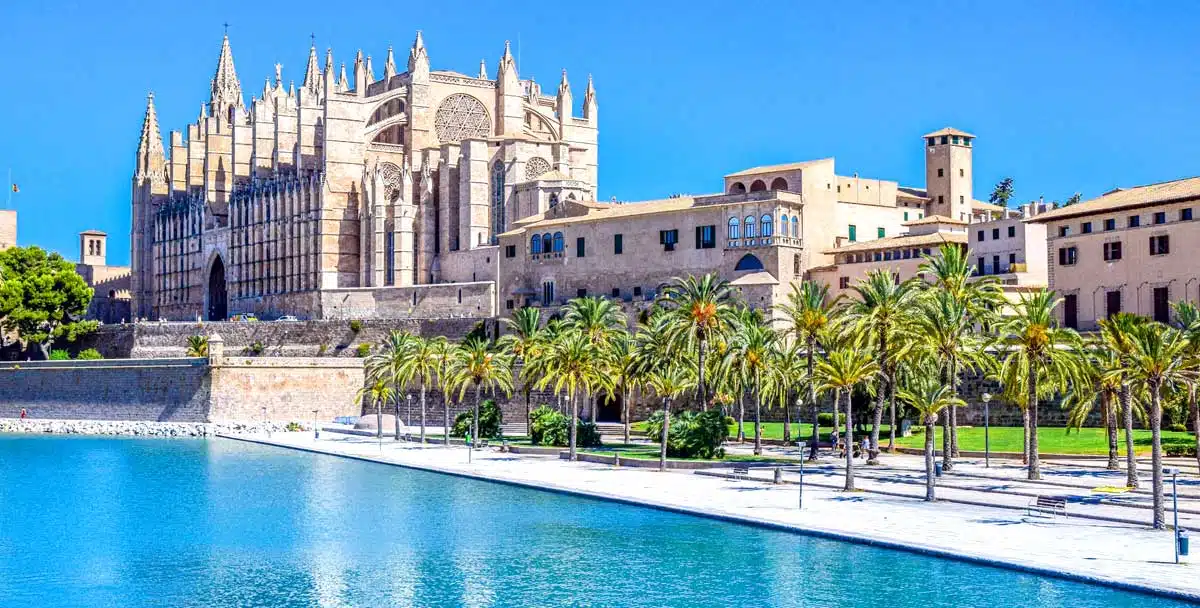 Cathedral of Mallorca in Palma
Cathedral of Mallorca in Palma
Santa Cruz de Tenerife: A Vibrant City Shaped by African, Spanish, and Latin American Cultural Influences
The capitals of the Canary Islands, Tenerife and Gran Canaria, are the two largest cities in the archipelago. Although they are towns in a group of islands that have been developed for tourism, they have been able to retain much of their old appearance. The city of Santa Cruz de Tenerife has retained much of its role as an important port for trade and commerce. Even today, the port has an impressive length. It is considered the largest shipping port in Spain and the deepest in the world. For visitors to the capital of the largest Canary Islands, the many shopping opportunities should be emphasized. The island is not particularly developed for tourism, so it is worth exploring the island during a holiday in Spain or exploring the Spanish flair of the old town of Santa Cruz with its colonial buildings. The island of Gran Canaria with its capital Las Palmas offers excellent opportunities for water sports, swimming, entertainment and shopping. While many tourists head to the south of the island, the beaches around the northern city of Las Palmas are never crowded. The flair of the city is characterized by the influence of many cultures on the cityscape, for example African, Spanish and Latin American.
Wonderful “Sand Art” in Tenerife
Top Places to Visit for Nature and Wildlife in the Best Holiday Destinations in Spain
The holiday destinations in Spain are known for very warm climate. The ideas surrounding the country tell of a very dry, even desert-like country. The many national parks show that this picture is very antiquated and not contemporary. Therefore, a holiday in Spain should include a visit to these national parks. A huge wealth of flora and fauna and different climatic zones testify to the very differently shaped natural areas on the Iberian Peninsula. The many rainy days in Galicia give the impression of being in Ireland. Many forests and green hills characterize the picture there. The many high mountains in the Pyrenees and Sierra Nevada mountain ranges still have snow on their peaks even in summer. In the northern regions like Galicia and Asturias one speaks of humid Spain, where even oaks grow. Palm trees thrive in the dry areas and sparse vegetation is found in the desert-like areas such as in the Murcía region. In addition, there is the different high-altitude vegetation in the mountains. In Andalusia and the many archipelagos, the many lagoons, bays and beaches give a colorful picture.
Top Activities in the Best Holiday Destinations in Spain
How you spend your free time is up to you. A holiday in Spain then offers everyone the basis of their own leisure interests live out If you want to experience modern and cosmopolitan Spain, you should go to the big cities of Madrid or Barcelona, where many young people from all over the world meet. There you can go shopping and take advantage of the cultural offerings such as concerts and museums. For those who just want to relax in beautiful weather, the many beaches in the coastal regions of Costa del Sol or Costa Brava are recommended. Architecture and art history fans should head to the cities of Barcelona, Santiago de Compostela or Granada. Extreme athletes get their money’s worth in Spain. A wide range of water sports such as surfing and diving can be found in numerous coastal regions. In the Pyrenees and the Sierra Nevada, winter holidaymakers can test the numerous slopes. In addition, there are numerous leisure activities in the numerous holiday regions such as Andalusia, the Canary Islands and the Balearic Islands. Here you will find many horse riding facilities, golf courses and tennis courts. The numerous national parks invite you to go hiking.
Plaza Mayor, Madrid
Barcelona

